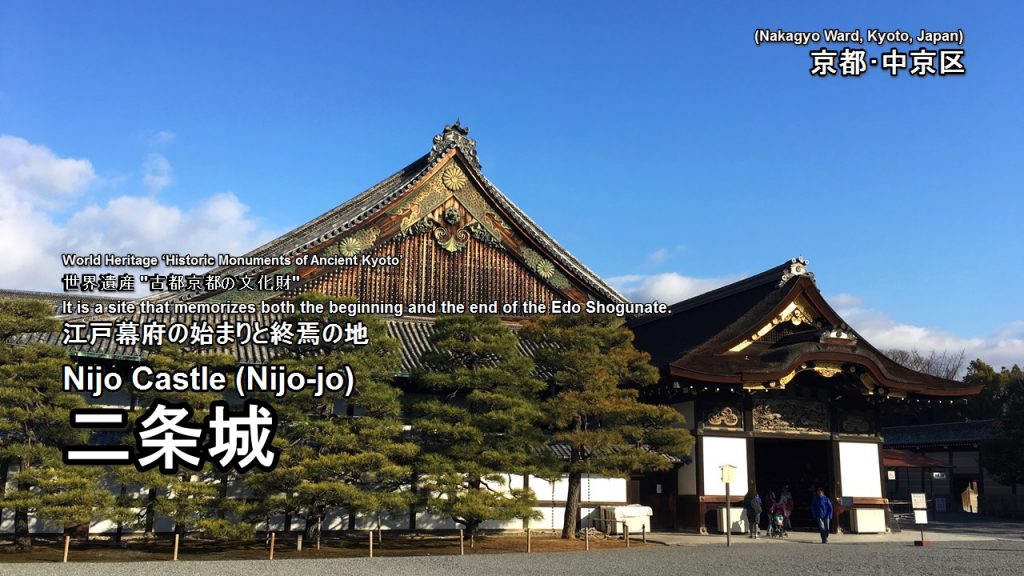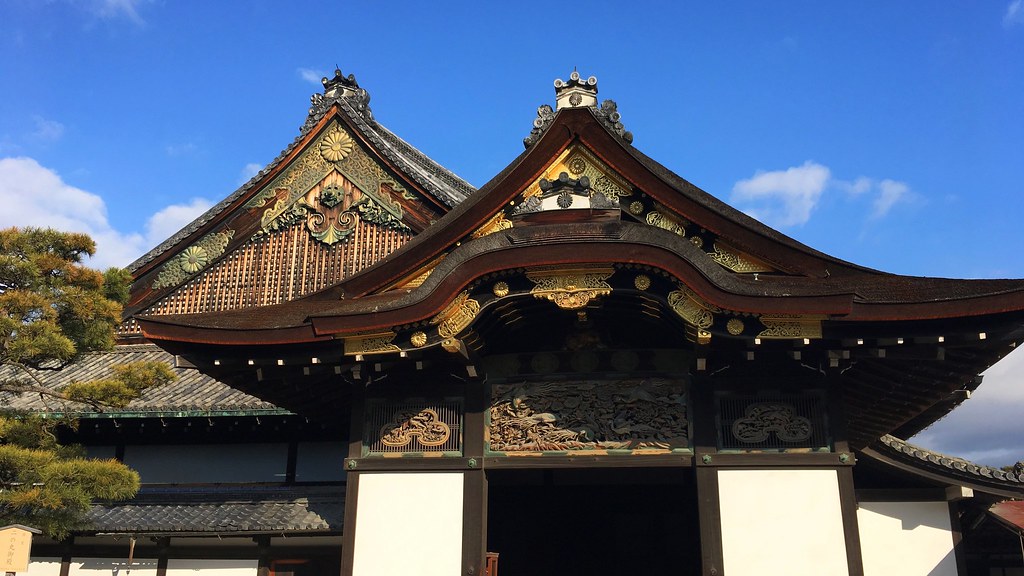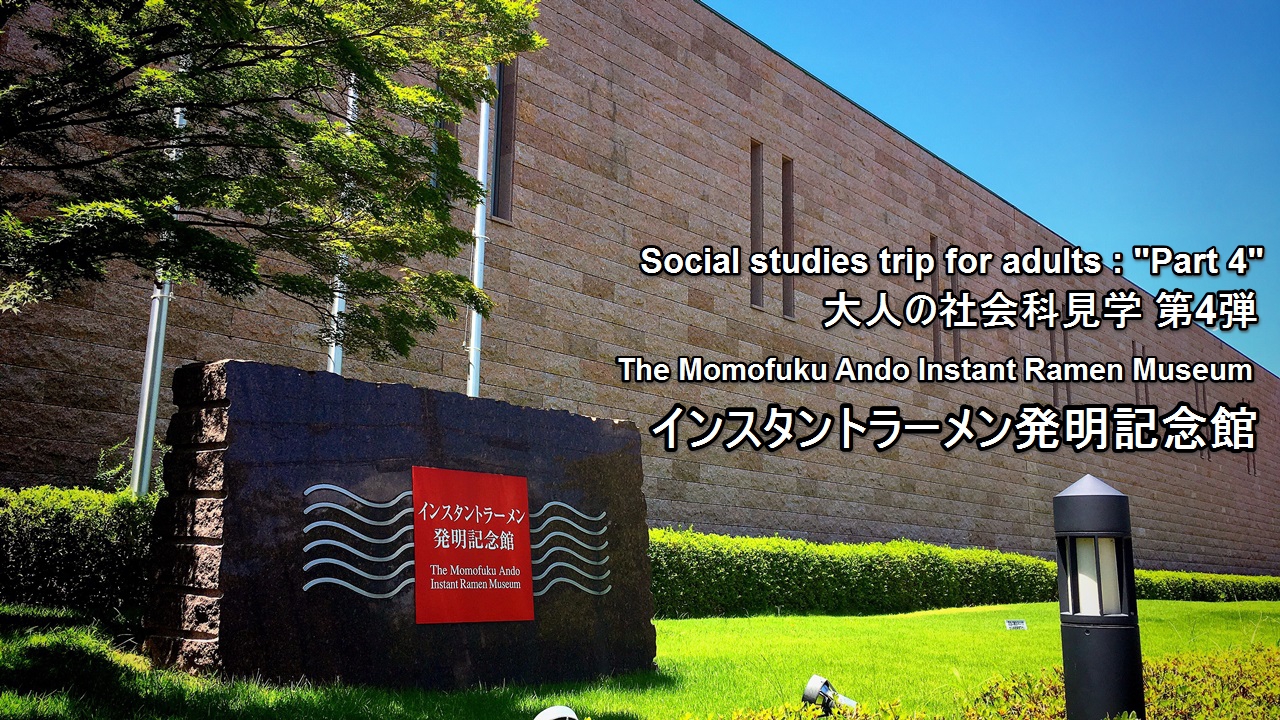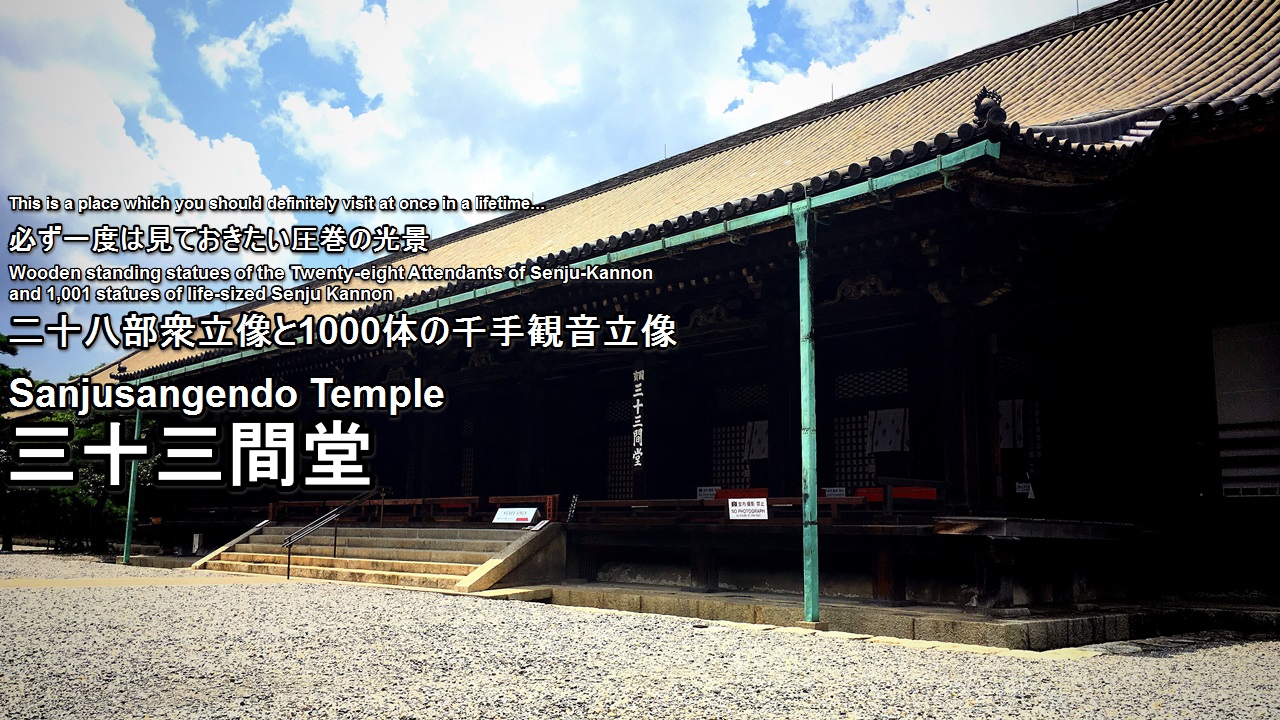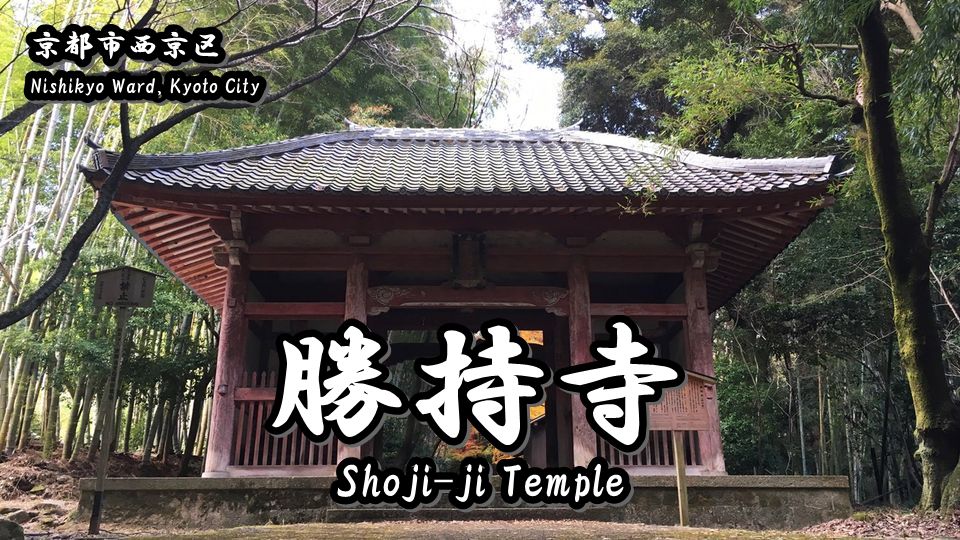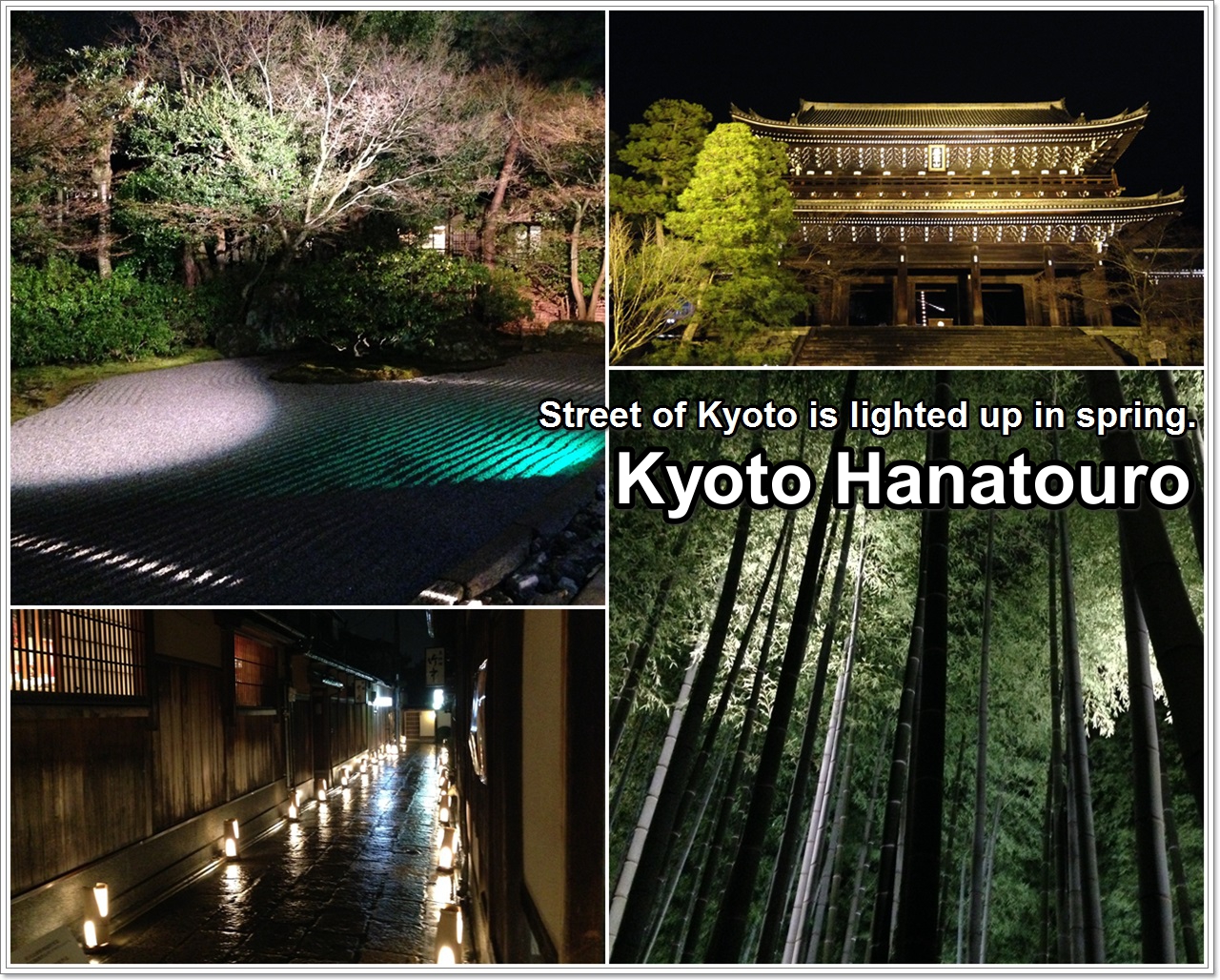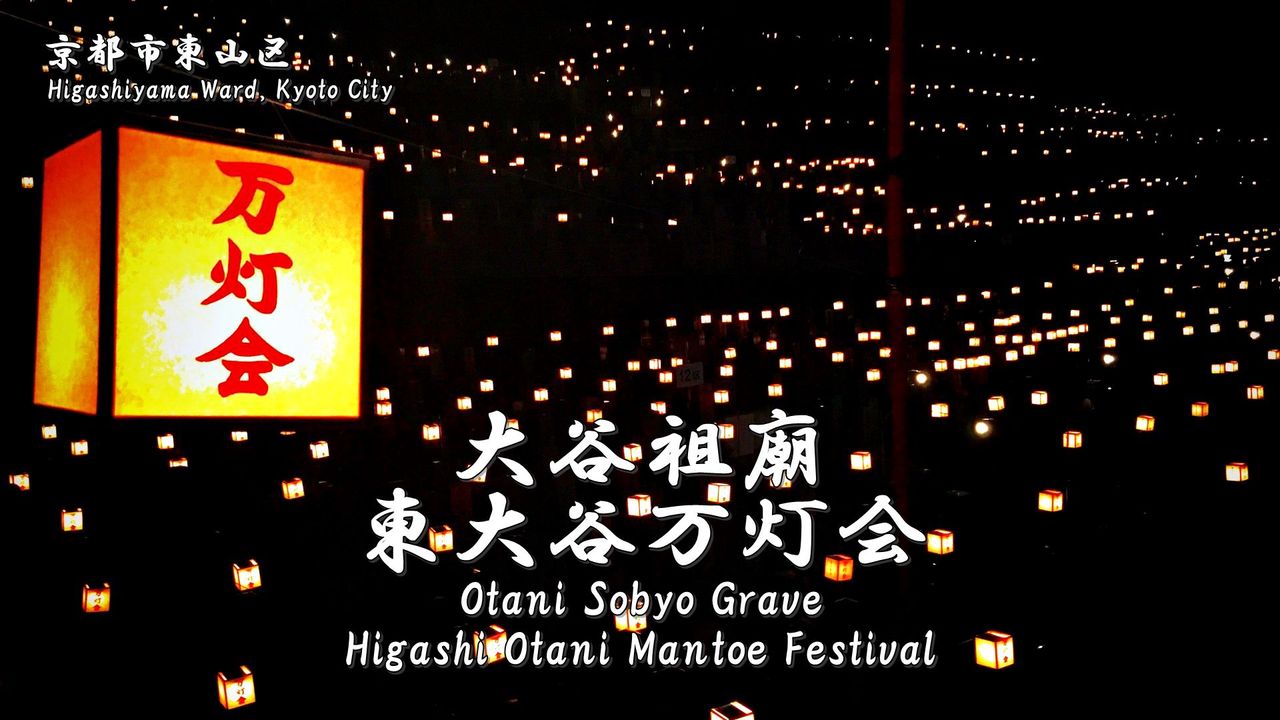Nijo Castle (二条城:Nijo-jo) which located at Nijo-dori Horikawa Nishiiru Nijojo-cho in Kyoto City’s Nakagyo Ward was built in 1603 of the Edo Period(江戸時代).
Actually, there are five buildings that have been called “Nijo Castle (二条城:Nijo-jo)” in Japanese history.
The current castle was built by Ieyasu TOKUGAWA(徳川家康), and was extended by Iemitsu TOKUGAWA(徳川家光) in the Edo Period.
Ieyasu TOKUGAWA‘s inauguration as Shogun and Yoshinobu TOKUGAWA’s(徳川慶喜) restoration of Imperial rule (大政奉還:Taisei Hokan) took here.
So, it is a site that marks both the beginning and the end of the Tokugawa Shogunate(江戸幕府).
In 1939, the entire Nijo Castle were designated as a national historic site under the name “Former Nijo-jo Imperial Villa.(旧二条離宮)”
In addition, it has been designated as the Michelin green guide ★★ and the World Heritage List as part of the ‘Historic Monuments of Ancient Kyoto’.
Contents:
- About World Heritage ‘Historic Monuments of Ancient Kyoto’
- History of Nijo Castle (Nijo-jo)
- About Nijo Castle (Nijo-jo)
- Information for visitors
- Highlights of Nijo Castle (Nijo-jo)
- Photos of Nijo Castle (Nijo-jo)
- Goshuin of Nijo Castle (Nijo-jo)
- How to get to Nijo Castle (Nijo-jo)
- Hotel search & reservation around Nijo Castle
1.About World Heritage ‘Historic Monuments of Ancient Kyoto’
17 places of temples and shrines of Kyoto are designated in the ‘Historic Monuments of Ancient Kyoto’.
↓Details of the “Historic Monuments of Ancient Kyoto” is here.↓
Nijo Castle (Nijo-jo) has been designated as the World Heritage List as part of the ‘Historic Monuments of Ancient Kyoto’.
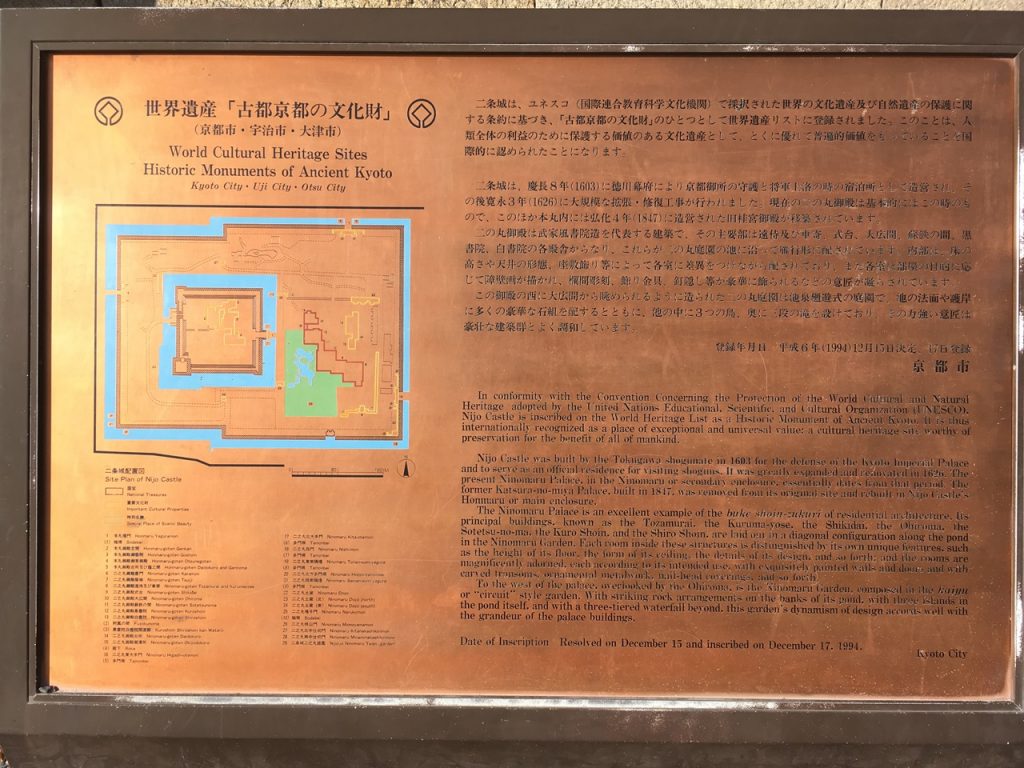
2.History of Nijo Castle (Nijo-jo)
Let’s study the history of this castle with me before introducing Nijo Castle (Nijo-jo).
I think that we can enjoy the sightseeing of Nijo Castle (Nijo-jo) more by learning the history of this castle.(○´艸`)
In short, Nijo Castle(二条城) is a site where a lot of historical incidents in Japan happened.
Almost every keyman of the Japanese history after the Muromachi period(室町時代) were related to the history of Nijo Castle (Nijo-jo).
Let’s read the history of such Nijo Castle (Nijo-jo) with me.
Actually, there are five castles that have been called “Nijo Castle (Nijo-jo)” in Japanese history.
The first castle was built in 1559 of the Muromachi period by Yoshiteru ASHIKAGA(足利義輝) who was the 13th Muromachi Shogun.
This building is said to be a residence rather than a castle.
He was assassinated in the Eiroku Incident(永禄の変) which was caused by Miyoshi Sanninshu(三好三人衆) in 1565.
The second castle was the castle which Nobunaga ODA(織田信長) built for Yoshiaki ASHIKAGA(足利義昭) who was the 15th(last) Muromachi Shogun in 1569 of the Muromachi period.
This castle reformed the first castle and was built.
At first, Nobunaga ODA and Yoshiaki ASHIKAGA were on good terms.
(Nobunaga wanted power of Ashikaga Shogunate(室町幕府) and Yoshiaki wanted military power of Nobunaga.)
However, later, the relations of these two people turned worse.
And Nobunaga and Yoshiaki fought in a war called Battle of Makishima Castle(槇島城の戦い).
Because Nobunaga ODA won this battle, Ashikaga Shogunate went to ruin.
So, because the need disappeared, the second castle generation was dismantled.
The third castle was the castle which Nobunaga ODA built in 1579 of the Azuchi-Momoyama period(安土桃山時代) for use as a base when he visited to Kyoto.
This castle was a new building where was different from the former castles.
In addition, because it was donated to Imperial Prince Sanehito(誠仁親王) in 1579, also called ’Nijo Shin-Gosho(二条新御所).’
However, this castle has been destroyed by the fight that began with Honnoji-no-hen(本能寺の変:Honno-ji Incident).
And, Nobunaga died in this incident.
The fourth castle was the castle which Hideyoshi TOYOTOMI(豊臣秀吉) built in 1583 of the Azuchi-Momoyama period for use as a base when he visited to Kyoto.
It was also called Myoken-ji Castle(妙顕寺城) because it was built on the former site of Myoken-ji Temple(妙顕寺) after it was moved.
Nothing remains of this third castle now.
And, it is unknown why this castle disappeared.
The fifth castle is current Nijo Castle.
This is the castle which Ieyasu TOKUGAWA(徳川家康) built in 1603 of the Edo Period for use as a base when he visited to Kyoto.
And afterwards, it was reformed by Iemitsu TOKUGAWA(徳川家光) who was the third Shogun of the Tokugawa clan for Gyoko(行幸:Emperor’s going out) of Emperor Gomizunoo(後水尾天皇) in 1626.
Because Ieyasu TOKUGAWA‘s inauguration as Shogun and Yoshinobu TOKUGAWA‘s restoration of Imperial rule (大政奉還:Taisei Hokan) took here, it is a site that marks both the beginning and the end of the Tokugawa Shogunate(江戸幕府).
3.About Nijo Castle (Nijo-jo)
Nijō Castle (二条城 Nijō-jō) is a flatland castle in Kyoto, Japan. The castle consists of two concentric rings (Kuruwa) of fortifications, the Ninomaru Palace, the ruins of the Honmaru Palace, various support buildings and several gardens. The surface area of the castle is 275,000 square metres (2,960,000 sq ft), of which 8,000 square metres (86,000 sq ft) is occupied by buildings.
It is one of the seventeen Historic Monuments of Ancient Kyoto which have been designated by UNESCO as a World Heritage Site.
引用(citation):https://en.wikipedia.org/wiki/Nij%C5%8D_Castle
Open:8:45-17:00
Admission fee:600 yen(Adult), 350 yen(Junior high school / high school student), 200 yen(Elementary school student)
Address:541, Nijo Jocho, Nakagyo-ku Kyoto-shi, Kyoto, 604-8301, Japan
Phone Number:+81-75-841-0096
Foundation:1603
Founder:Ieyasu TOKUGAWA
Nijo Castle (二条城:Nijo-jo) which located at Nijo-dori Horikawa Nishiiru Nijojo-cho in Kyoto City’s Nakagyo Ward was built in 1603 of the Edo Period(江戸時代).
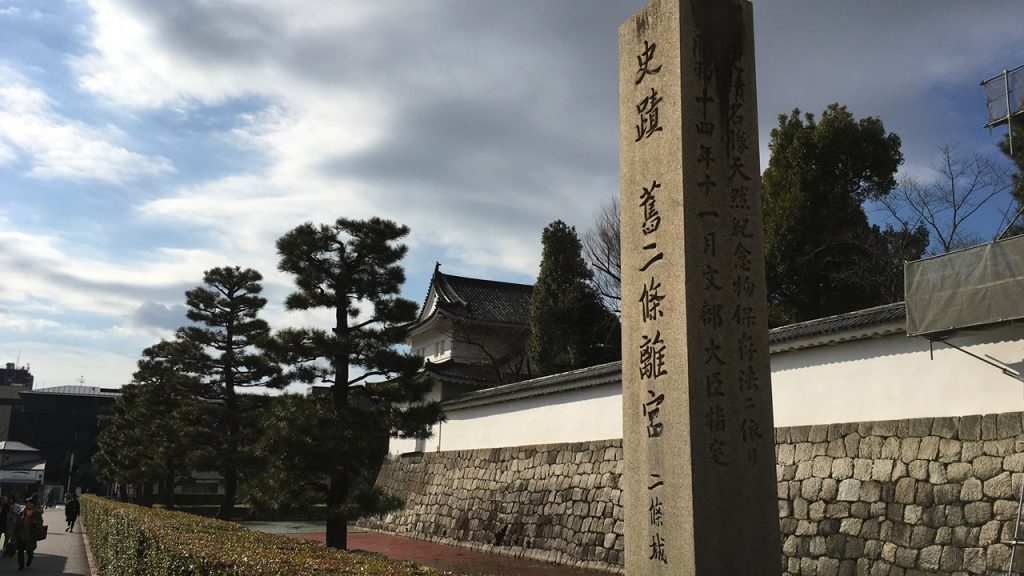
In 1939, the entire Nijo Castle were designated as a national historic site under the name “Former Nijo-jo Imperial Villa.(旧二条離宮)”
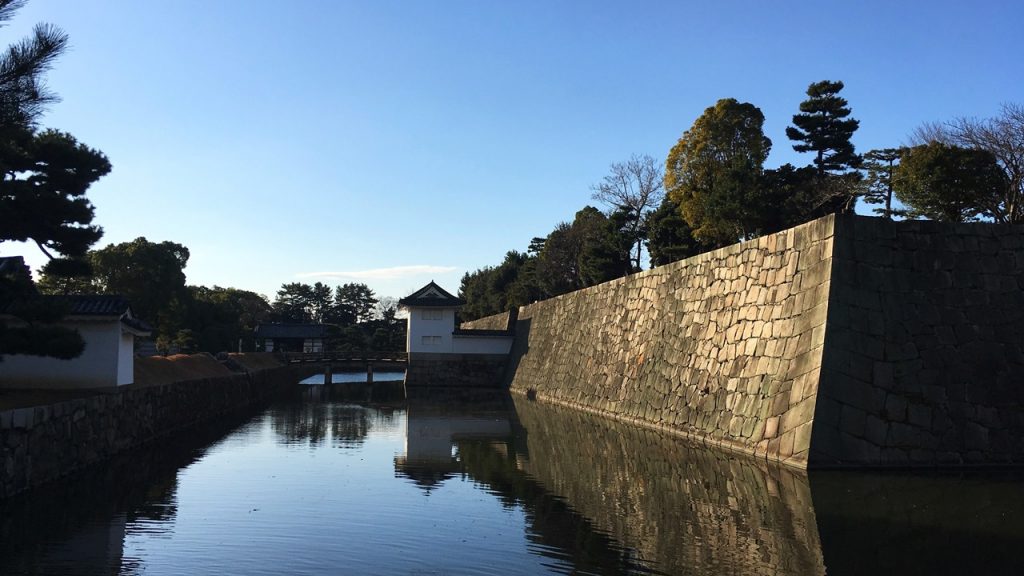
In addition, Ninomaru Palace is designated as a National Treasure, the 954 wall paintings in 22 buildings and in Ninomaru Palace are designated as a Important Cultural Properties, and Ninomaru Garden is designated as a Special Scenic Spot.
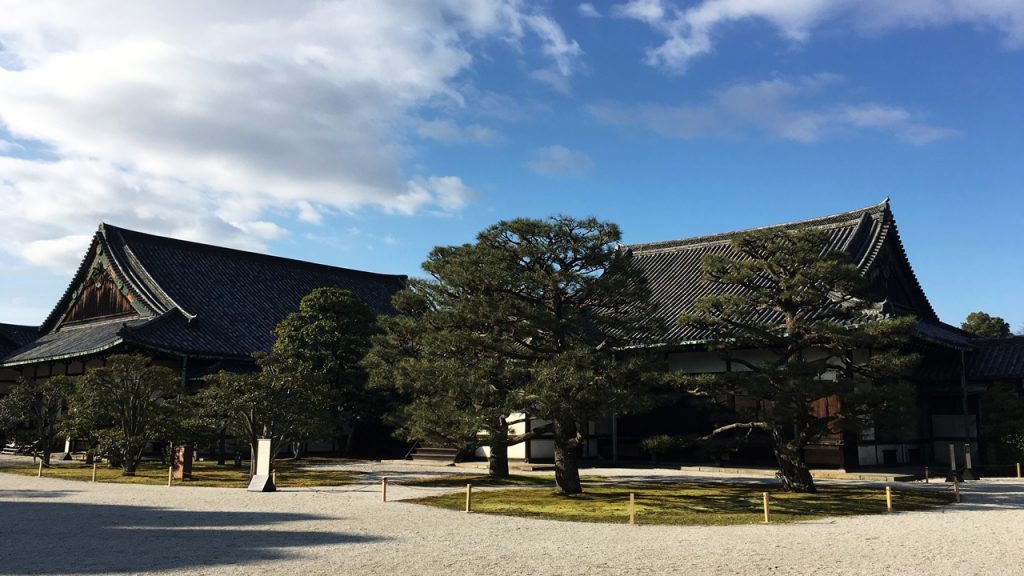
It is a site that marks both the beginning and the end of the Tokugawa Shogunate(江戸幕府).

Next, let’s see the highlight of Nijo Castle (Nijo-jo)!!

4.Information for visitors
・Photography and video recording are prohibited inside the Ninomaru Palace(二の丸御殿).
Let’s follow a rule.
5.Highlights of Nijo Castle (Nijo-jo)
- 東南隅櫓(重要文化財):Tonan Sumiyagura (Southeast Corner Tower)(Important cultural property)
- 西南隅櫓(重要文化財):Seinan Sumiyagura (Southwest Corner Tower)(Important cultural property)
- 東大手門(重要文化財):Higashi Ote-mon Gate(Important cultural property)
- 北大手門(重要文化財):Kita Ote-mon Gate(Important cultural property)
- 西門(重要文化財):Nishi-mon Gate(Important cultural property)
- 南門:Minami-mon gate
- 唐門(重要文化財)*:Kara-mon Gate(Important cultural property)*
- 二の丸御殿(国宝)*:Ninomaru Palace(National Treasure)*
- 車寄(国宝)*:Kurumayose(Carriage Porch)(National Treasure)*
- 遠侍(国宝)*:Tosaburai(Retainer’s Rooms)(National Treasure)*
- 式台(国宝)*:Shikidai(Reception Room)(National Treasure)*
- 大広間・蘇鉄の間(国宝)*:O-hiroma, Sotetsu-no-ma(National Treasure)*
- 黒書院(小広間)(国宝)*:Kuro Shoin (Shohiroma)(National Treasure)*
- 白書院(御座の間)(国宝)*:Shiro Shoin (Goza-no-ma)(National Treasure)*
- 台所(重要文化財)*:Daidokoro(Kitchen)(Important cultural property)*
- 御清所(重要文化財)*:Okiyo-dokoro(Important cultural property)*
- 二の丸庭園(特別名勝)*:Ninomaru Garden(Special Scenic Spot)*
- 土蔵(重要文化財)*:Dozo(Storehouse)(Important cultural property)*
- 本丸櫓門(重要文化財)*:Honmaru Yagura-mon Gate(Important cultural property)*
- 本丸御殿(重要文化財)*:Honmaru palace(Important cultural property)*
- 御常御殿(重要文化財)*:Otsune Goten(Important cultural property)*
- 御書院(重要文化財)*:Goshoin(Important cultural property)*
- 玄関(重要文化財)*:Genkan(Entrance hall)(Important cultural property)*
- 台所・雁の間(重要文化財)*:Daidokoro(Kitchen),Gan-no-ma(Important cultural property)*
- 本丸庭園*:Honmaru Garden
- 天守閣跡*:The foundation of a Castle tower*
- 西北土蔵(重要文化財)*:Northwest storehouse(Important cultural property)*
- 西南土蔵(重要文化財)*:Southwest storehouse(Important cultural property)*
- 南中仕切門(重要文化財)*:Minaminakajikiri-mon Gate(Important cultural property)*
- 北中仕切門(重要文化財)*:Kitanakajikiri-mon Gate(Important cultural property)*
- 鳴子門(重要文化財)*:Naruko-mon Gate(Important cultural property)*
- 桃山門(重要文化財)*:Momoyama-mon Gate(Important cultural property)*
- 清流園:Seiryu-en Garden
- 香雲亭:Koun-tei
- 和楽庵:Waraku-an
- 加茂七石:Kamo Nanaishi(Kamo’s seven stones)
- 展示・収蔵館:Museum
「*印」のついている見どころは有料エリアです。(This seal (*) is a pay area.)
●東南隅櫓(重要文化財):Tonan Sumiyagura (Southeast Corner Tower)(Important cultural property)
This is the Tonan Sumiyagura (Southeast Corner Tower) built in about 1603 of the Edo Period which has been designated as an Important cultural property.
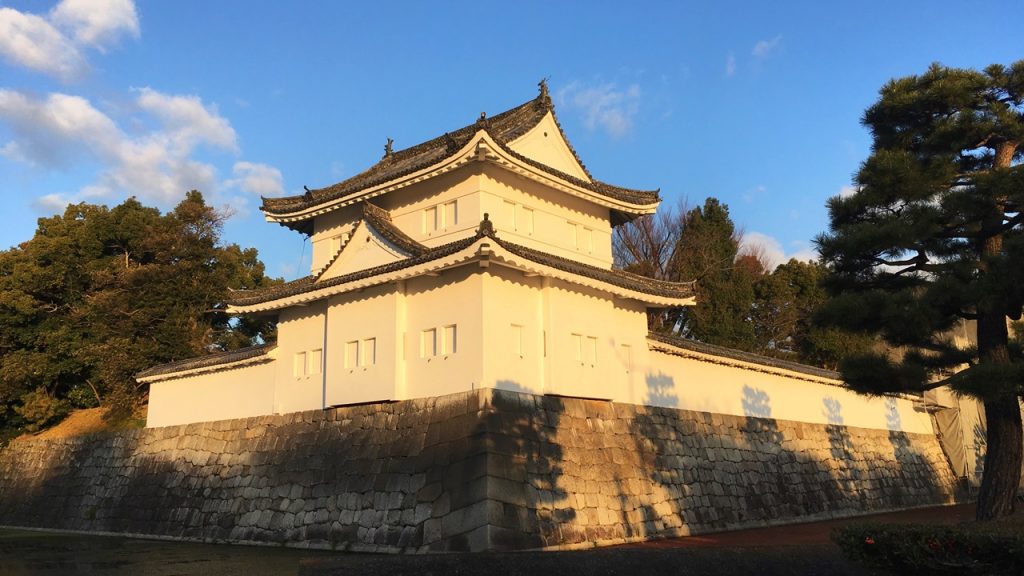
When this castle was built, there were four corner towersin this castle.
However, the two of these disappeared by the great Kyoto’s fire of the Tenmei Era in 1788.
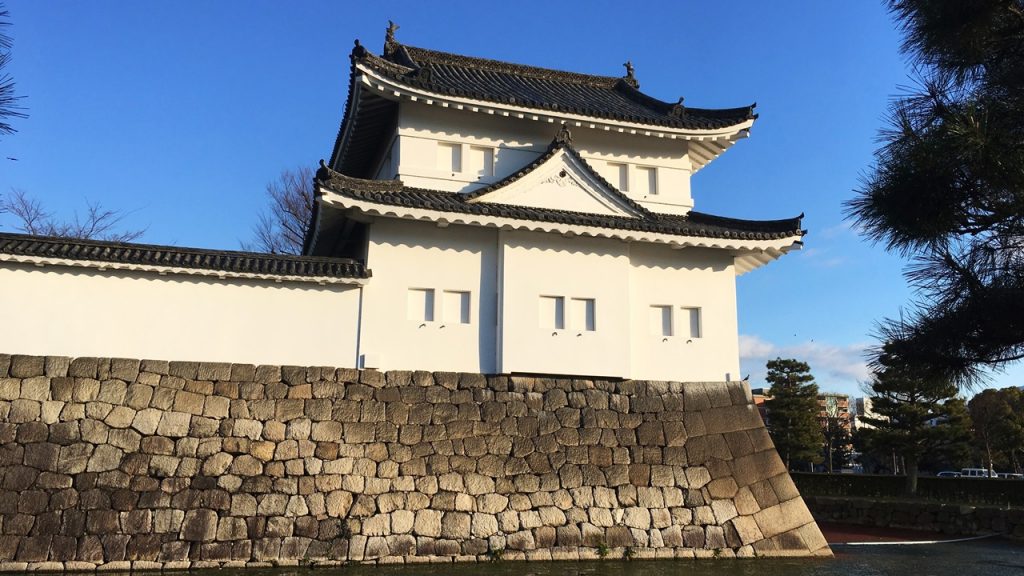
●西南隅櫓(重要文化財):Seinan Sumiyagura (Southwest Corner Tower)(Important cultural property)
This is the Seinan Sumiyagura (Southwest Corner Tower) built in about 1603 of the Edo Period which has been designated as an Important cultural property.
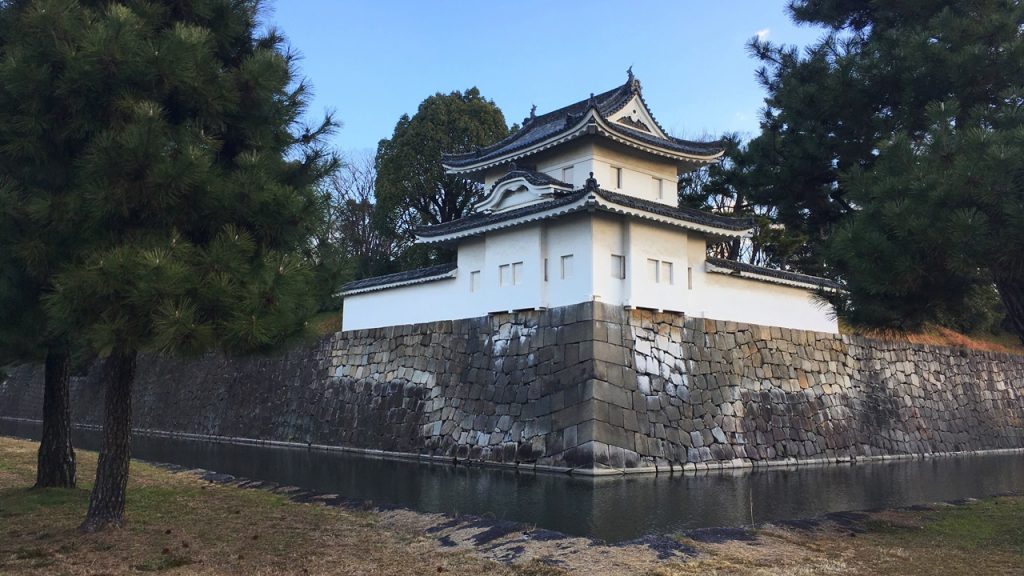
●東大手門(重要文化財):Higashi Ote-mon Gate(Important cultural property)
This is the Higashi Ote-mon Gate built in 1662 of the Edo Period which has been designated as an Important cultural property.
(This gate is under construction now. (to March 21, 2017))
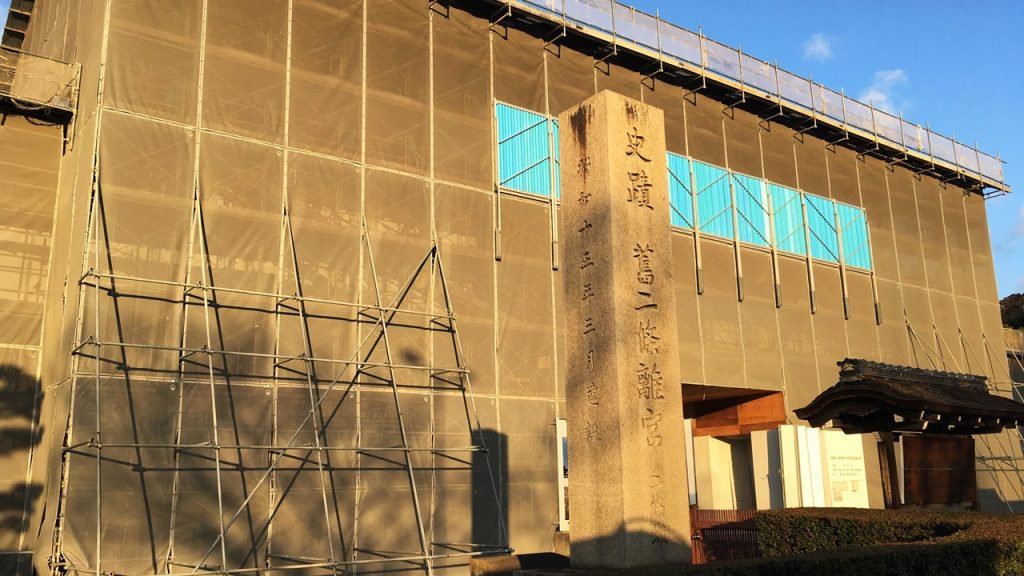
●北大手門(重要文化財):Kita Ote-mon Gate(Important cultural property)
This is the Kita Ote-mon Gate built in about 1603 of the Edo Period which has been designated as an Important cultural property.
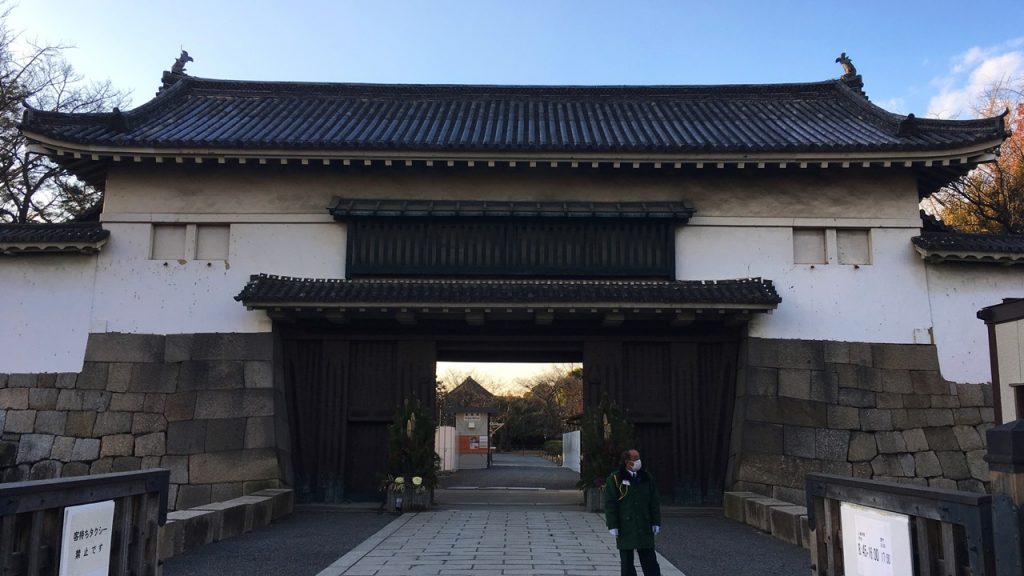
●西門(重要文化財):Nishi-mon Gate(Important cultural property)
This is the Nishi-mon Gate built in the early Edo Period.
Because this gate would be filled up with a soil at the time of the emergency, it was also called ‘Uzumi-mon Gate(埋門:burial gate)’.

●南門:Minami-mon gate
This is the Minami-mon Gate built in 1915 of the Taisho perio(大正時代).
This gate was made in commemoration of the enthronement of the Emperor Taisho(大正天皇).
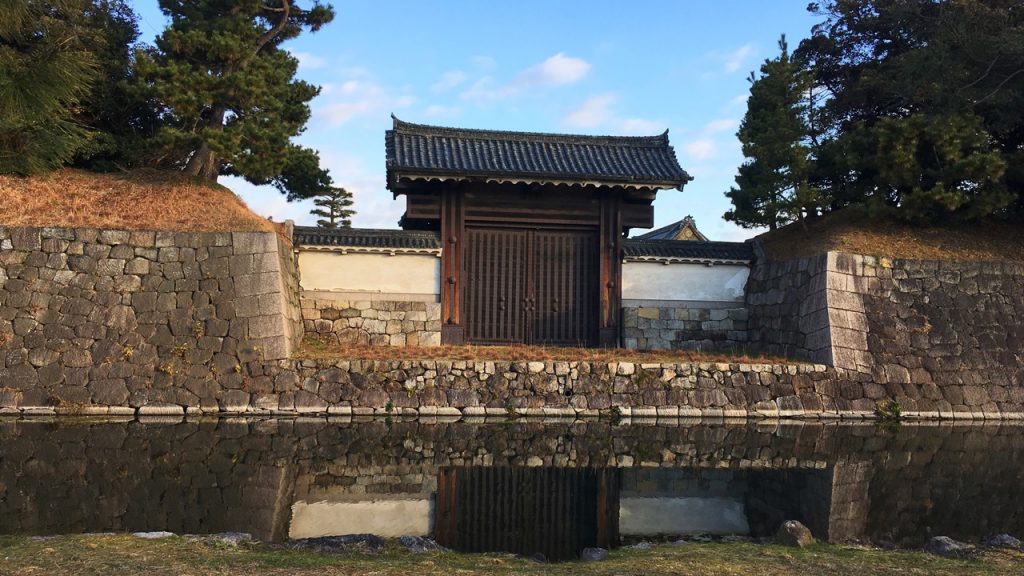
●唐門(重要文化財)*:Kara-mon Gate(Important cultural property)*
This is the Kara-mon Gate built in about 1603 of the Edo Period which has been designated as an important cultural property.
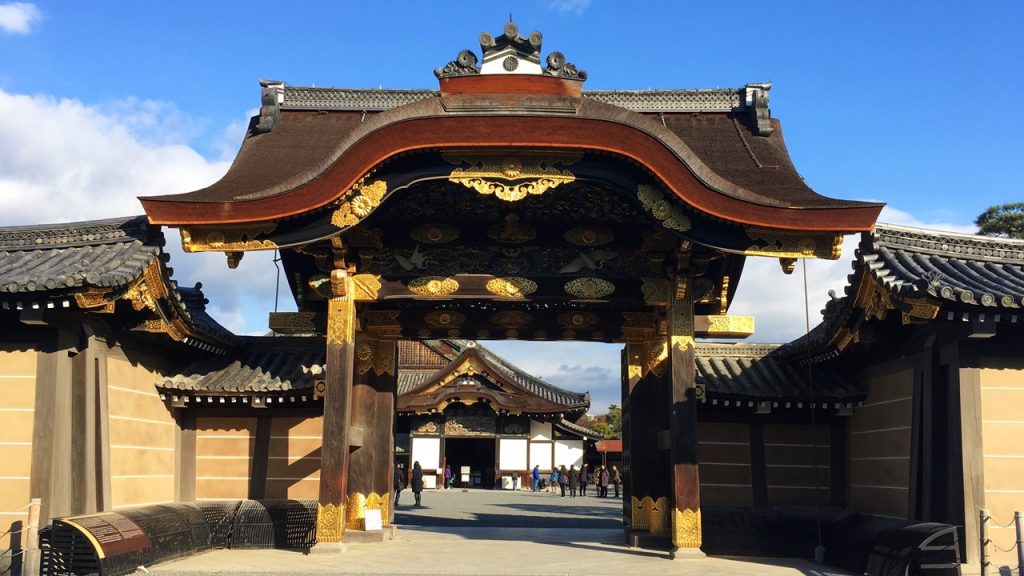
This gate was repaired in about 1625.
This gate had the role as the entrance gate of the Ninomaru Palace(二の丸御殿).
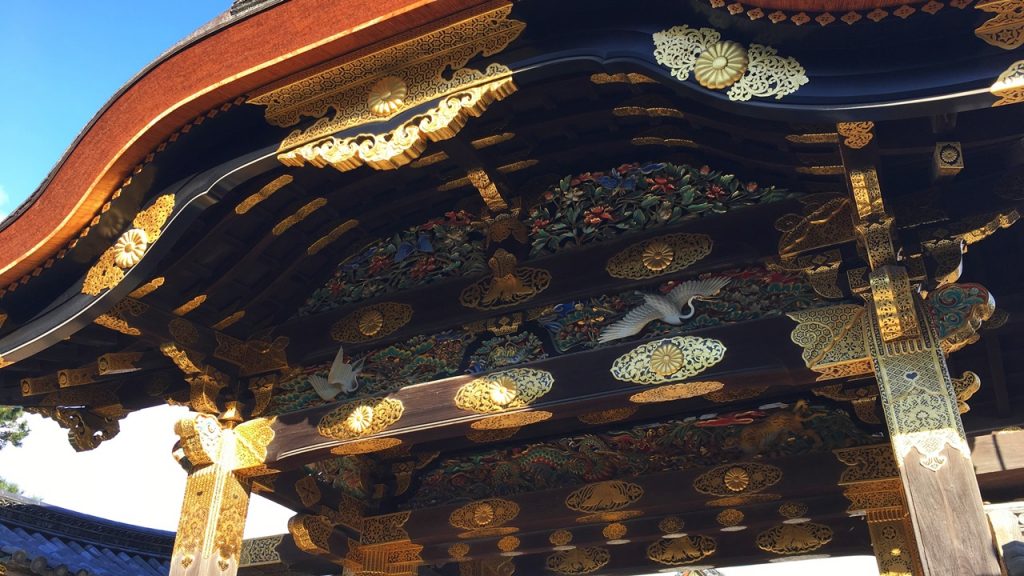
●二の丸御殿(国宝)*:Ninomaru Palace(National Treasure)*
The Ninomaru Palace is the building where six buildings were connected by a corridor.
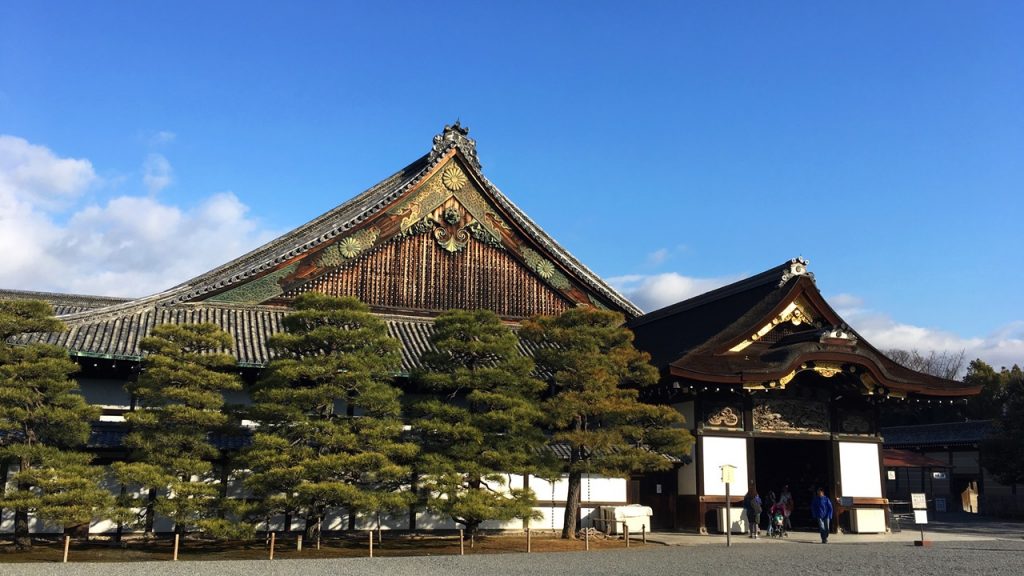
●車寄(国宝)*:Kurumayose(Carriage Porch)(National Treasure)*
This is the Kurumayose(Carriage Porch) which has been designated as a National Treasure.
This building had the role as the entrance of the Ninomaru Palace.
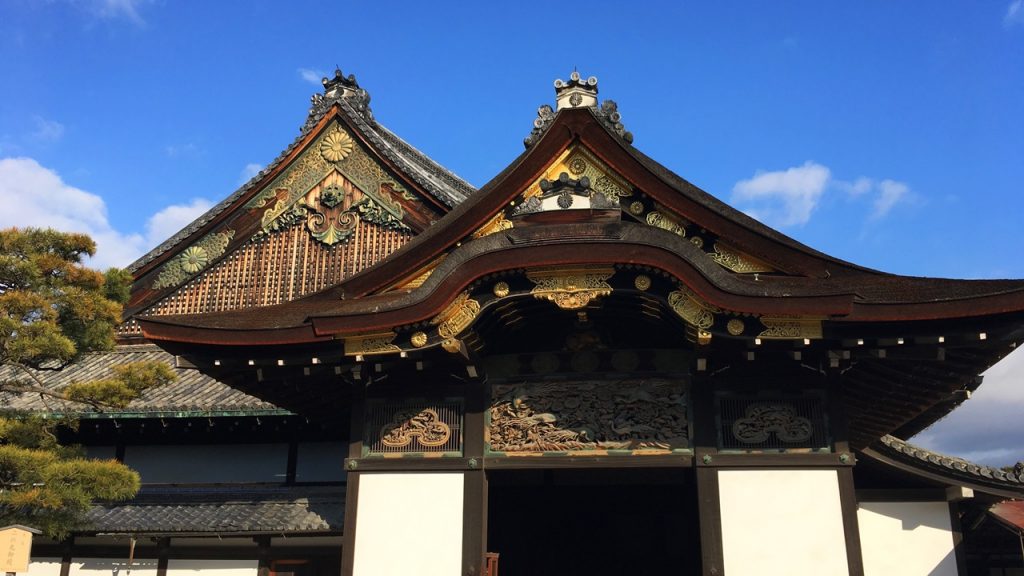
●遠侍(国宝)*:Tosaburai(Retainer’s Rooms)(National Treasure)*
This is the Tosaburai(Retainer’s Rooms) which has been designated as a National Treasure.
This building had the role as the waiting room of daimyos(大名).
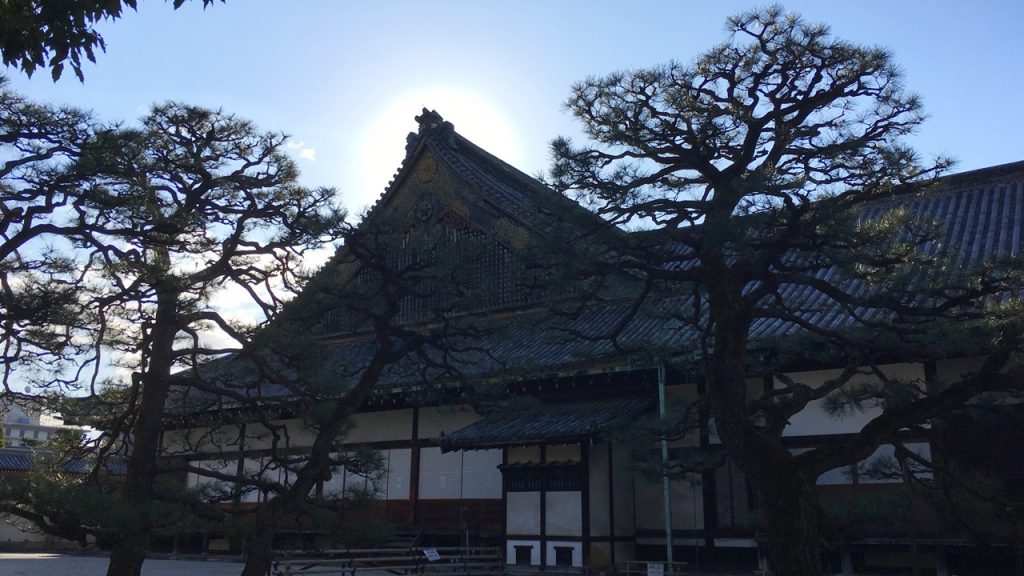
●式台(国宝)*:Shikidai(Reception Room)(National Treasure)*
The building in the center is the Shikidai(Reception Room) which has been designated as a National Treasure.
There was the role as the room where daimyos donated a gift to the Shogun.
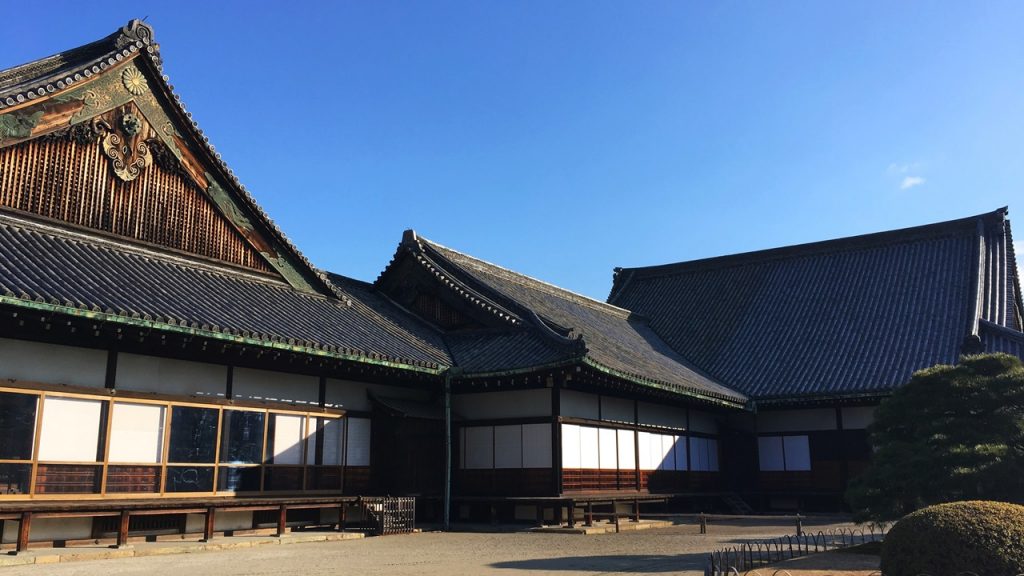
●大広間・蘇鉄の間(国宝)*:O-hiroma, Sotetsu-no-ma(National Treasure)*
This is the O-hiroma which has been designated as a National Treasure.
This building had a role as the place to have an audience with the shogun(将軍).
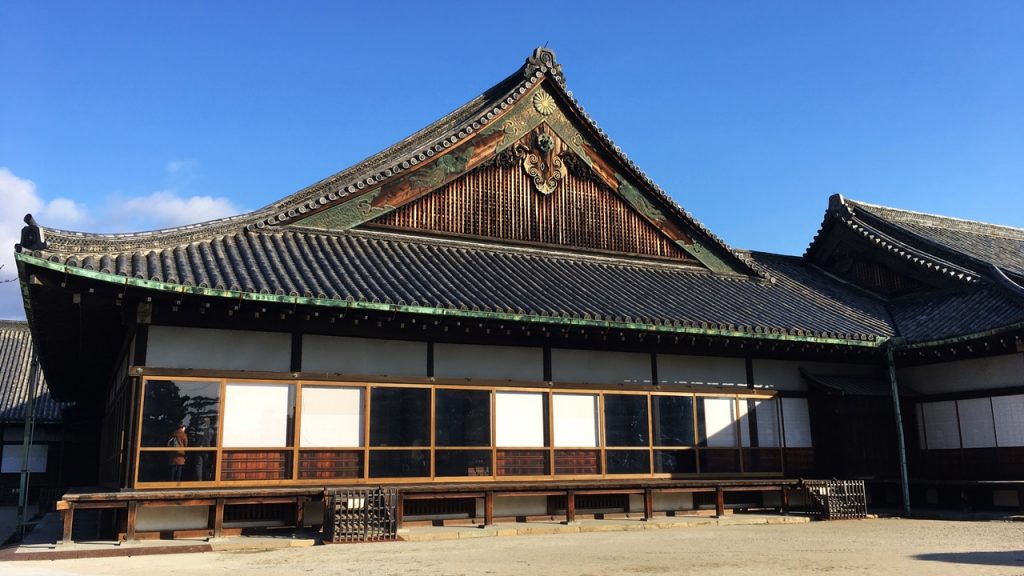
The Sotetsu-no-ma is a corridor connecting the O-hiroma and the Kuro Shoin.
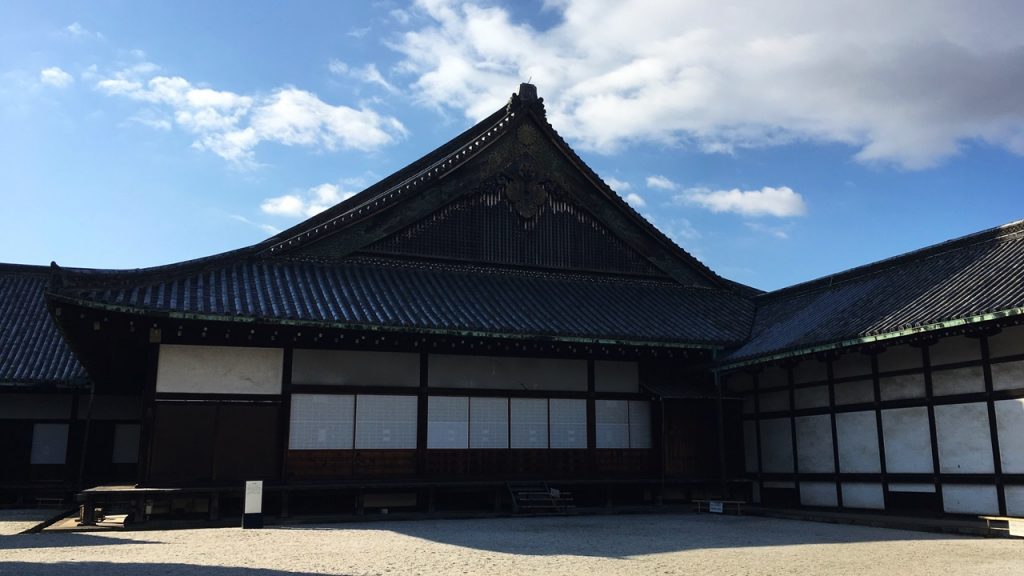
●黒書院(小広間)(国宝)*:Kuro Shoin (Shohiroma)(National Treasure)*
This is the Kuro Shoin (Shohiroma) which has been designated as a National Treasure.
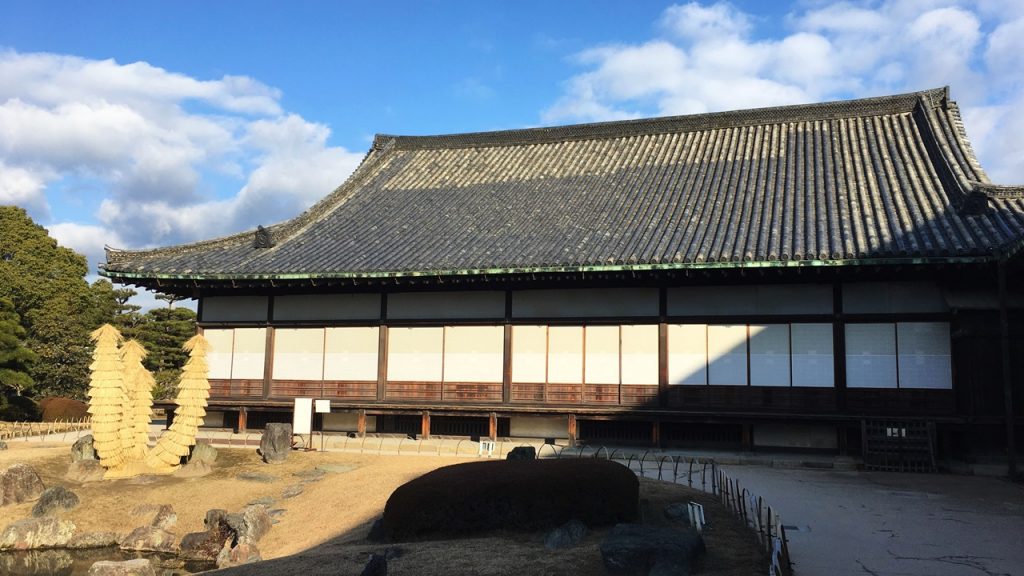
This building had the role as the meeting room.

●白書院(御座の間)(国宝)*:Shiro Shoin (Goza-no-ma)(National Treasure)*
This is the Shiro Shoin (Goza-no-ma) which has been designated as a National Treasure.
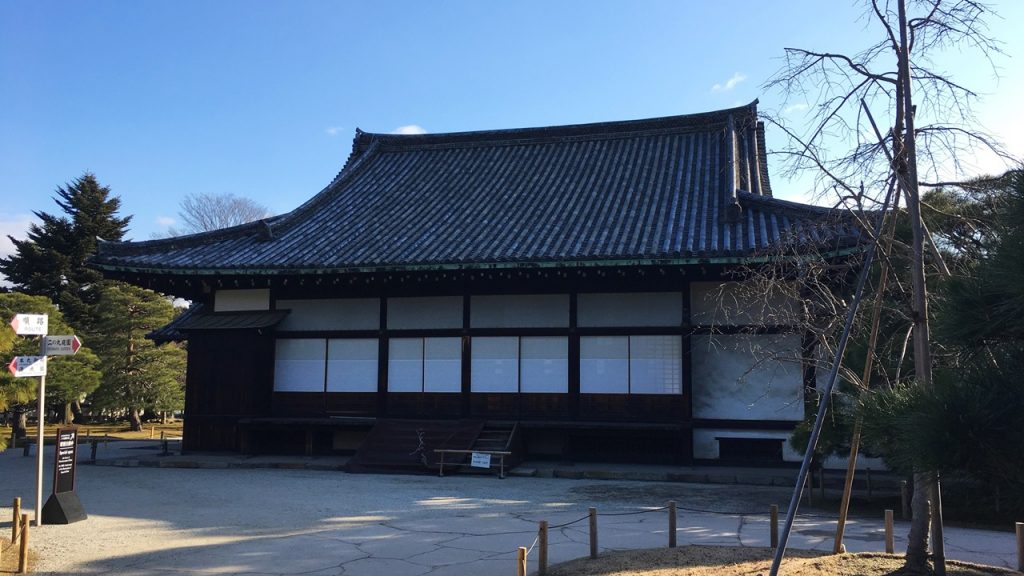
This building had the role as the house of the shogun(将軍).
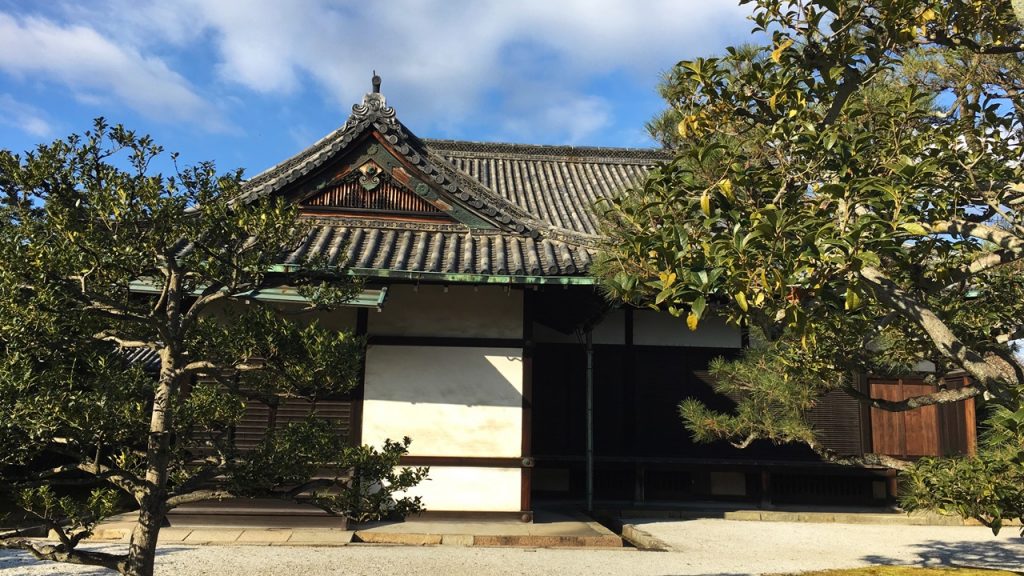
●台所(重要文化財)*:Daidokoro(Kitchen)(Important cultural property)*
This is the Daidokoro(Kitchen) which has been designated as an Important cultural property.
This building had the role as the kitchen.
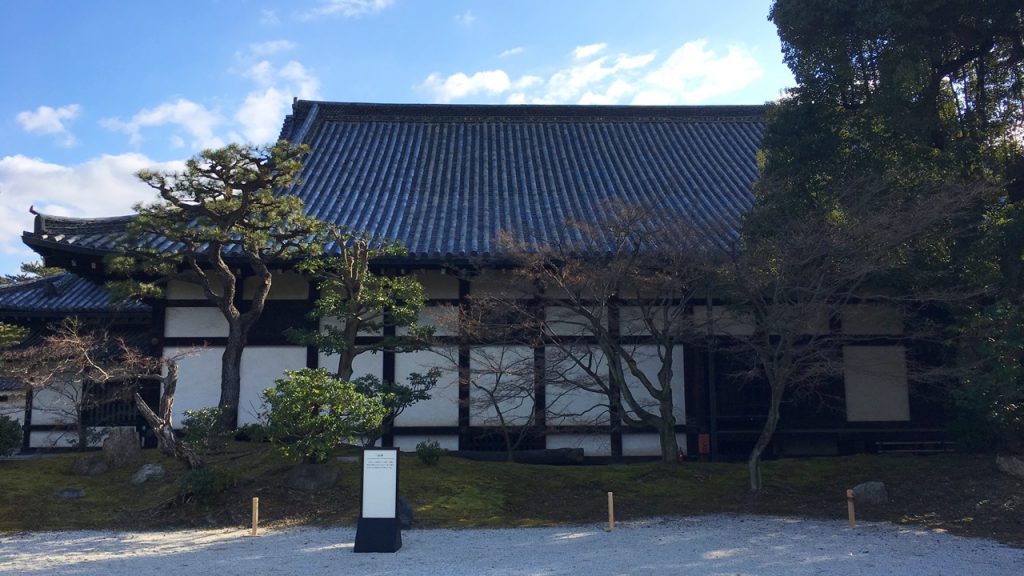
●御清所(重要文化財)*:Okiyo-dokoro(Important cultural property)*
This is the Okiyo-dokoro which has been designated as an important cultural property.
This building also had the role as the kitchen.
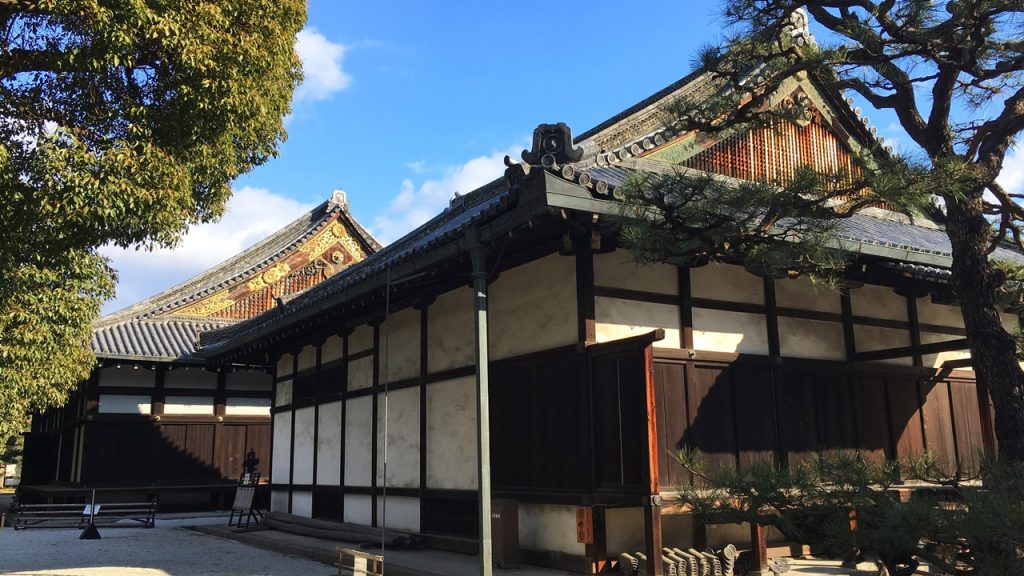
●二の丸庭園(特別名勝)*:Ninomaru Garden(Special Scenic Spot)*
Ninomaru Garden is designated as a Special Scenic Spot.

This garden was made by Enshu KOBORI(小堀遠州) who was a famous gardener of the Edo period.

There was the battle formation of a fight called ‘Hachijin(八陣:Eight positions)’ which Zhuge Liang(諸葛孔明) who was an excellent schemer of the Age of the three countries period of China devised.
Because this garden is designed to be able to look from 8 directions, it is also called ‘Hachijin-no-niwa(八陣の庭:the garden of eight positions).’

●土蔵(重要文化財)*:Dozo(Storehouse)(Important cultural property)*
This is the Dozo(Storehouse) in the north side of the Ninomaru Palace which has been designated as an important cultural property.
This building had a role as the storehouse which kept rice in it.

●本丸櫓門(重要文化財)*:Honmaru Yagura-mon Gate(Important cultural property)*
This is the Honmaru Yagura-mon Gate built in about 1626 of the Edo Period which has been designated as an important cultural property.
This gate had a role as the entrance to the Honmaru(本丸:donjon).
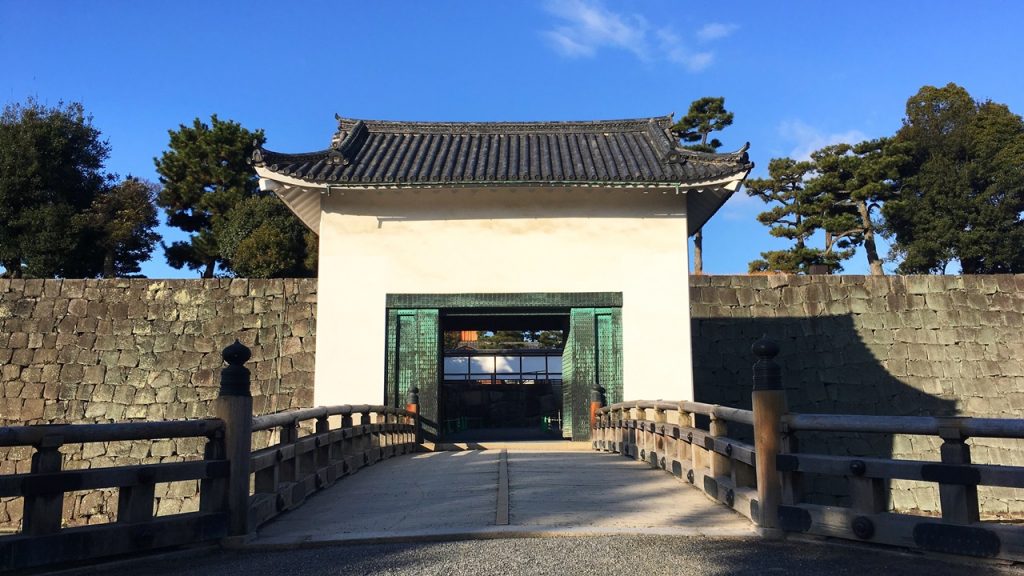
●本丸御殿(重要文化財)*:Honmaru palace(Important cultural property)*
The interior of these buildings are not ordinarily open to the public now. (As of January, 2017)
The Honmaru palace is the building where five buildings were connected.
This building removed and rebuilt the old residence of Prince Katsura which was located to the Kyoto Gyoen (京都御苑:Kyoto Imperial Garden).
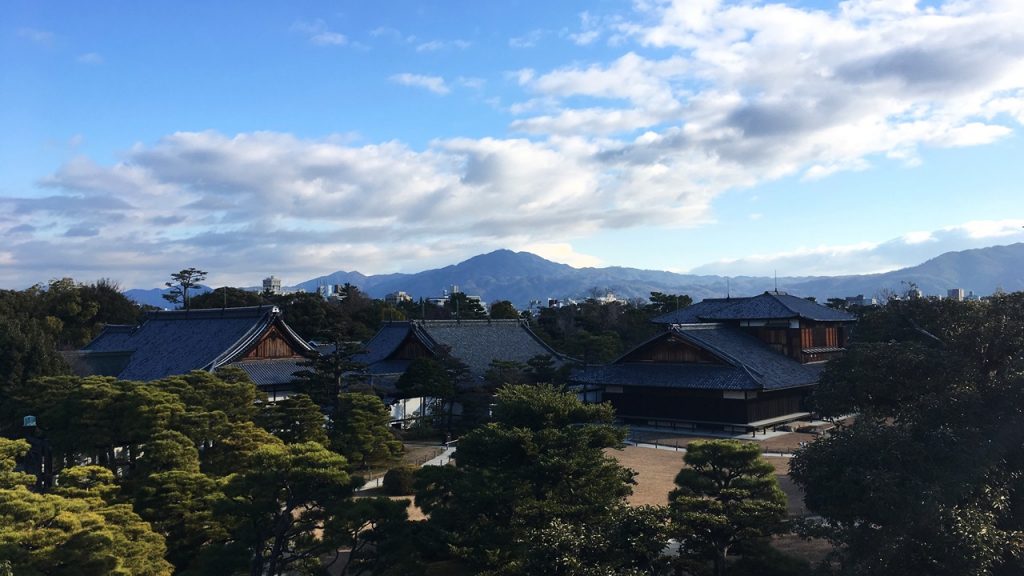
●御常御殿(重要文化財)*:Otsune Goten(Important cultural property)*
This is the Otsune Goten built in about 1849 of the late Edo Period which has been designated as an important cultural property.
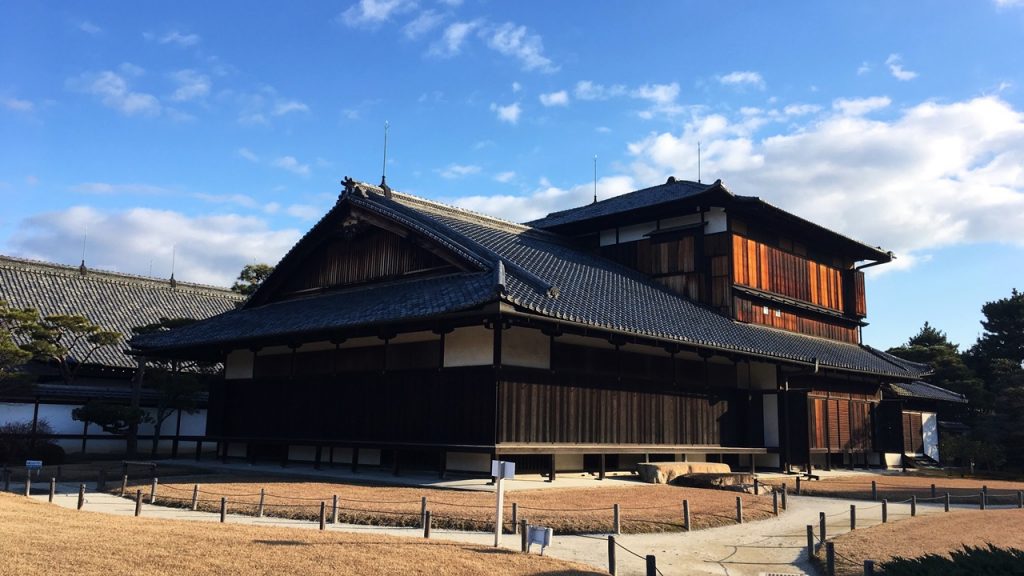
●御書院(重要文化財)*:Goshoin(Important cultural property)*
This is the Goshoin which has been designated as an important cultural property.
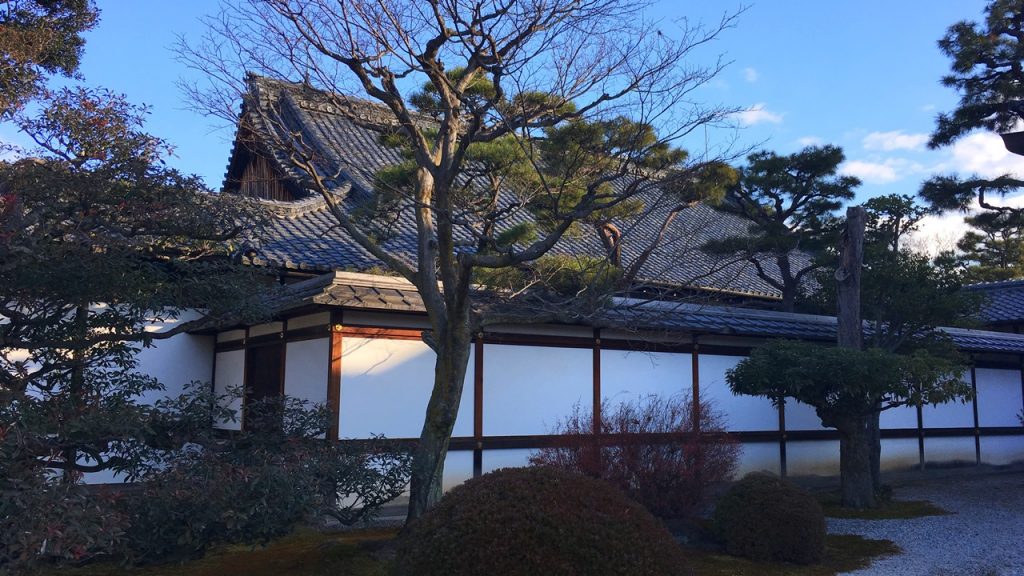
●玄関(重要文化財)*:Genkan(Entrance hall)(Important cultural property)*
This is the Genkan(Entrance hall) which has been designated as an important cultural property.
These buildings were also used as the temporary Imperial Palace of Emperor Komei(孝明天皇) in old days.
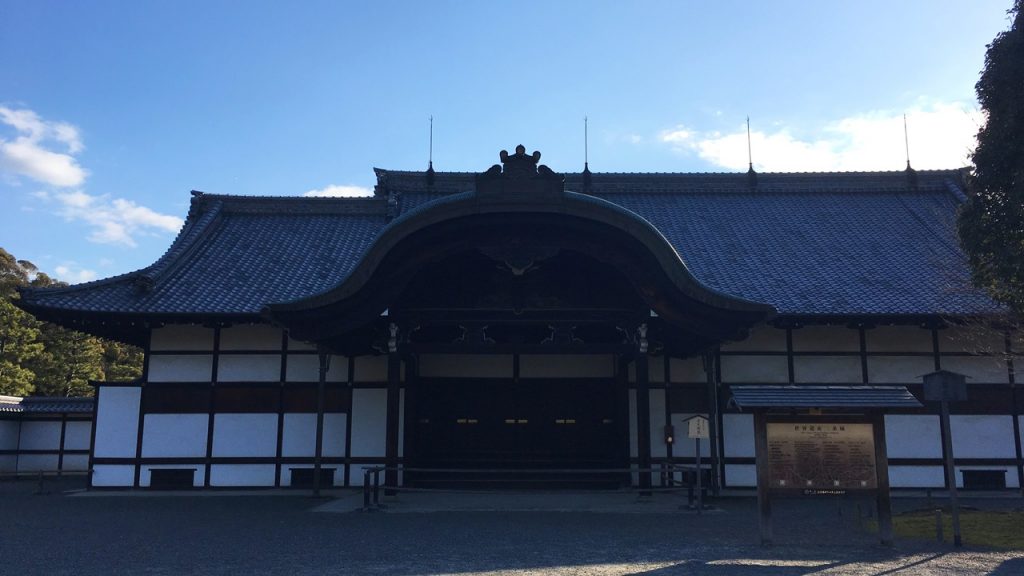
●台所・雁の間(重要文化財)*:Daidokoro(Kitchen),Gan-no-ma(Important cultural property)*
There are Daidokoro(Kitchen) and Gan-no-ma in the other side of this wall which have been designated as an important cultural property.
(Because the inner area is not ordinarily open to the public now, I couldn’t see these buildings.)
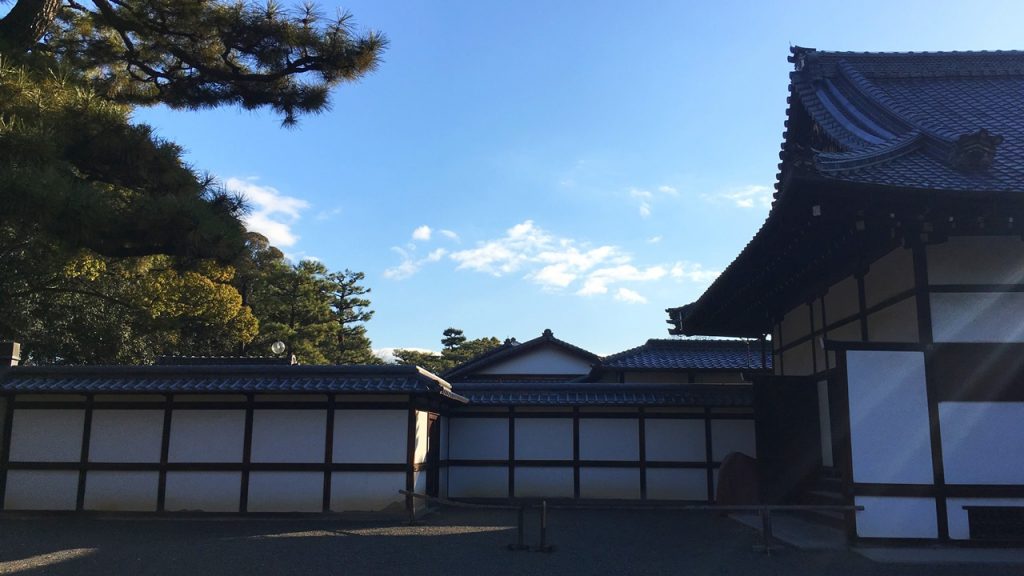
●本丸庭園*:Honmaru Garden
The current Honmaru garden was made as the circuit style garden(回遊式庭園) in 1896.
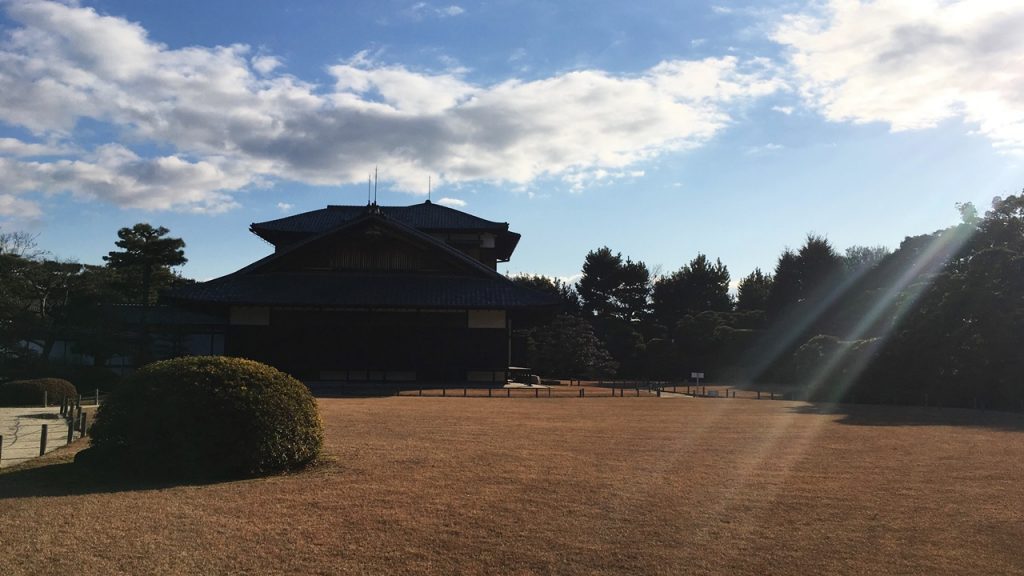
Originally this garden was Karesansui(枯山水庭園:Japanese rock garden).
However, this garden was repaired in a current style when the Emperor Meiji(明治天皇) came to this castle in 1896.
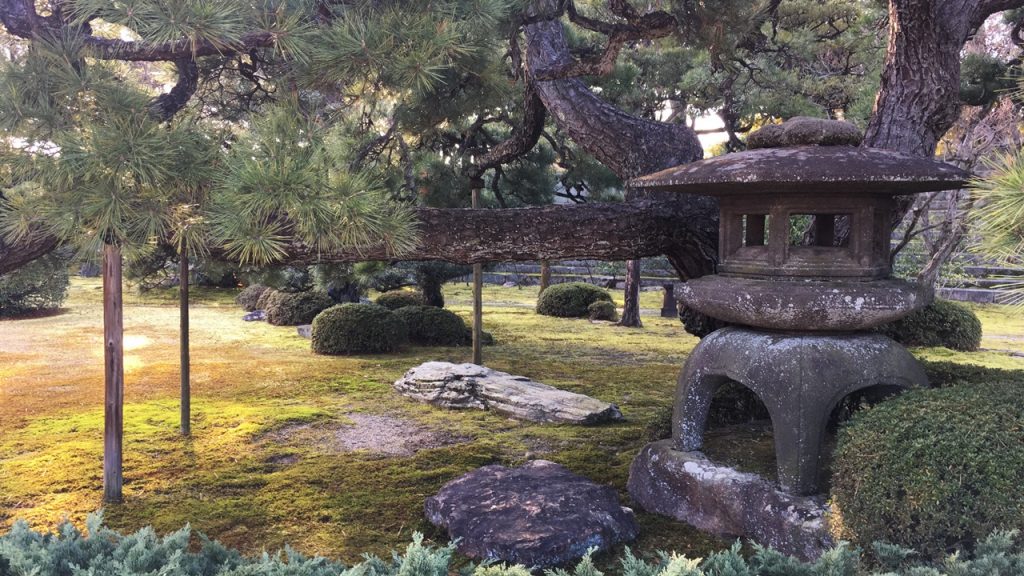
●天守閣跡*:The foundation of a Castle tower*
There is the foundation of a Castle tower in this garden.
And it is currently becoming the viewing platform.
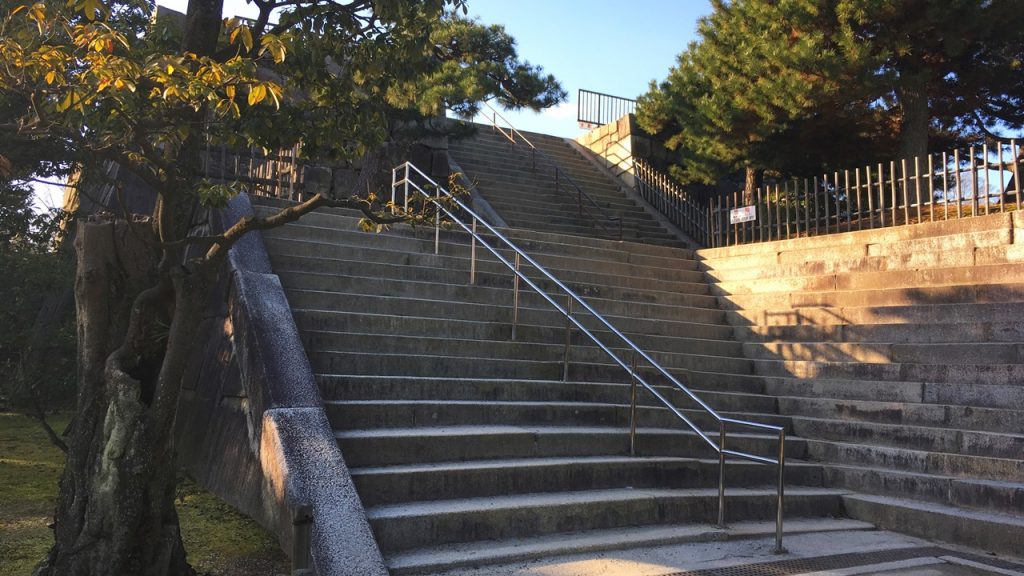
We can overlook the Honmaru palace from here.

●西北土蔵(重要文化財)*:Northwest storehouse(Important cultural property)*
This is the Northwest storehouse built in about 1603 of the Edo Period which has been designated as an important cultural property.

●西南土蔵(重要文化財)*:Southwest storehouse(Important cultural property)*
This is the Southwest storehouse built in about 1603 of the Edo Period which has been designated as an important cultural property.

●南中仕切門(重要文化財)*:Minaminakajikiri-mon Gate(Important cultural property)*
This is the Minaminakajikiri-mon Gate built in the south side which has been designated as an important cultural property.
This gate has a role as the partition between the part that Ieyasu Tokugawa(徳川家康) constructed and the part that Iemitsu Tokugawa(徳川家光) constructed.
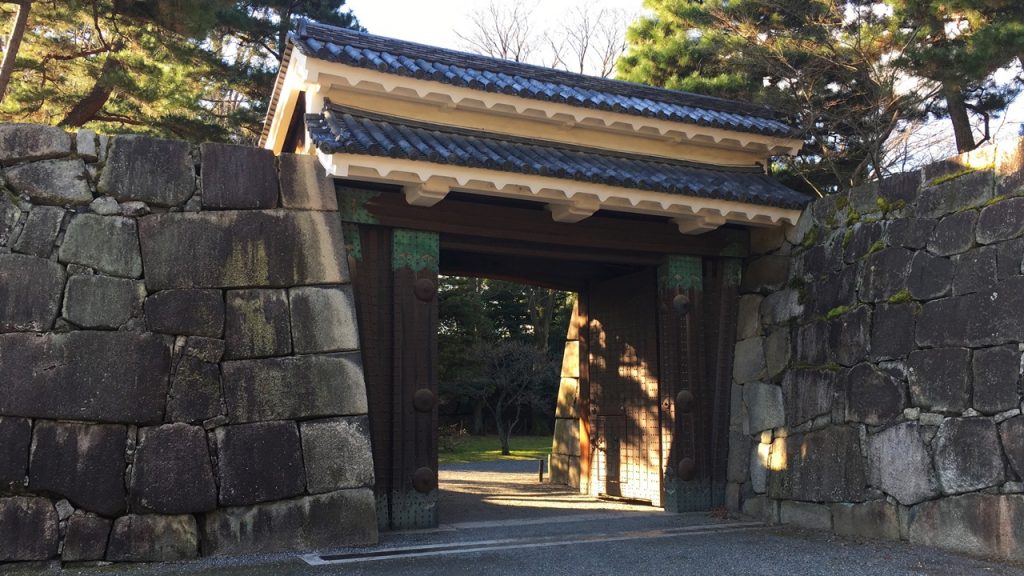
●北中仕切門(重要文化財)*:Kitanakajikiri-mon Gate(Important cultural property)*
This is the Kitanakajikiri-mon Gate built in the north side which has been designated as an important cultural property.
This gate has a role same as the Minaminakajikiri-mon Gate.
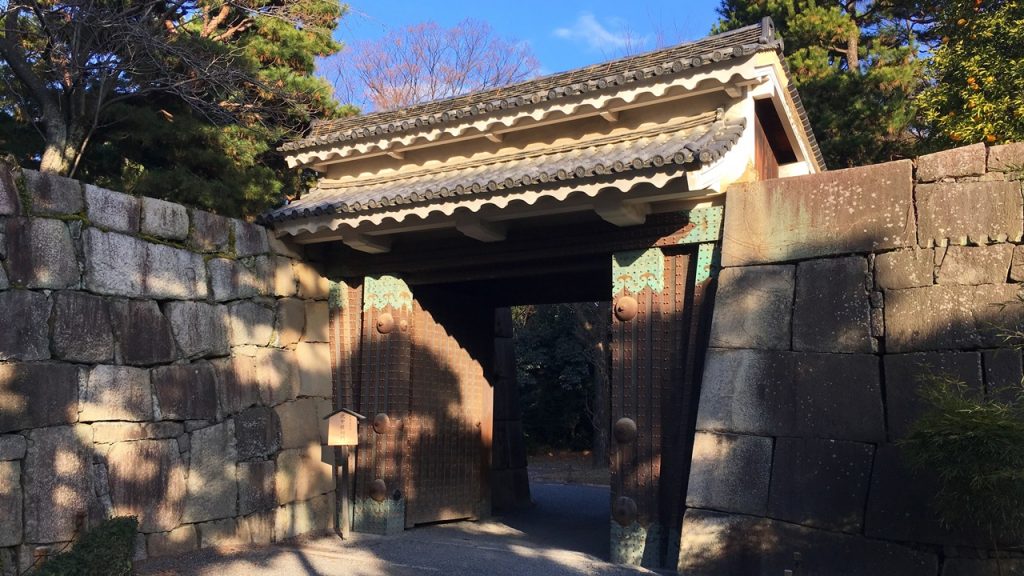
●鳴子門(重要文化財)*:Naruko-mon Gate(Important cultural property)*
This is the Naruko-mon Gate built in about 1603 of the Edo Period which has been designated as an important cultural property.
This gate is built in the north side of the passage that leads to the Honmaru.
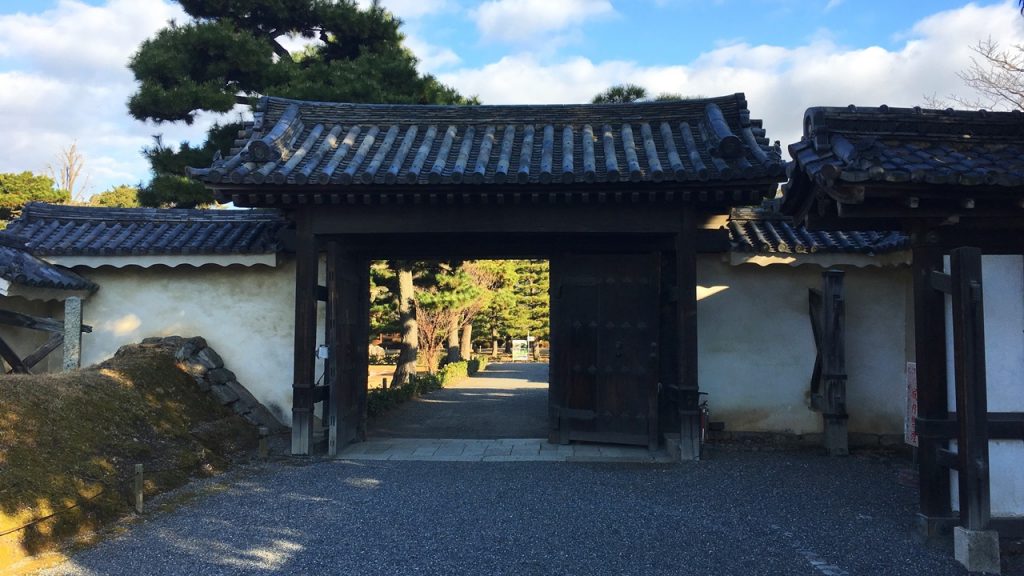
●桃山門(重要文化財)*:Momoyama-mon Gate(Important cultural property)*
This is the Momoyama-mon Gate built in about 1603 of the Edo Period which has been designated as an important cultural property.
This gate is built in the south side of the passage that leads to the Honmaru.
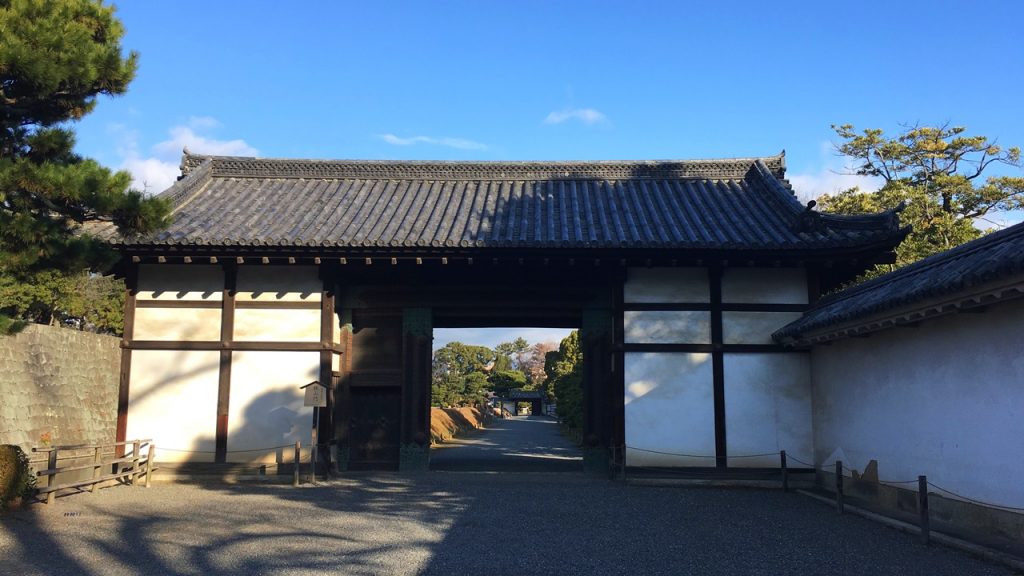
●清流園:Seiryu-en Garden
This garden was built near Ninomaru’s Kita Ote-mon Gate in 1965.
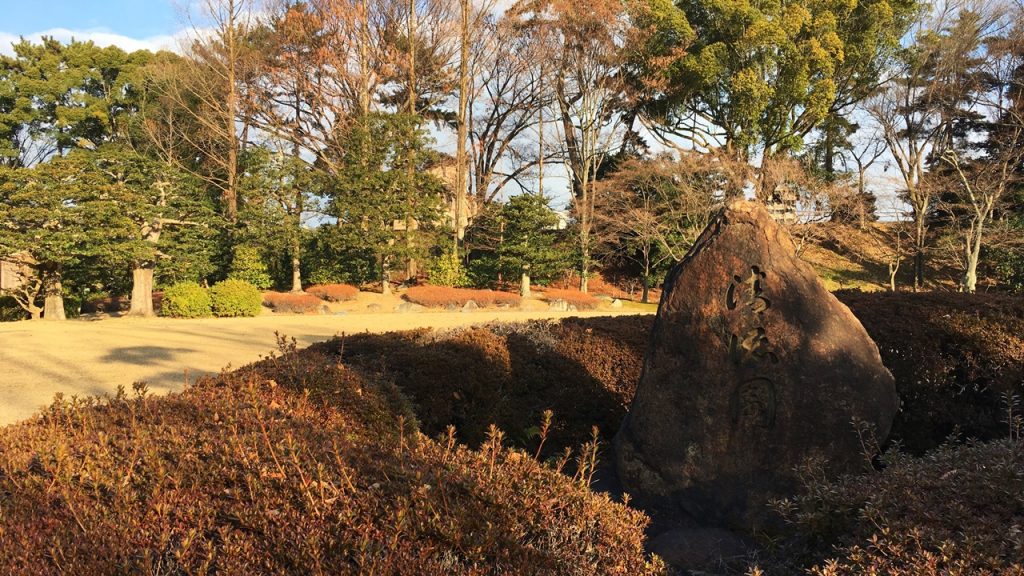
This garden is a blend of Western and Japanese styles.
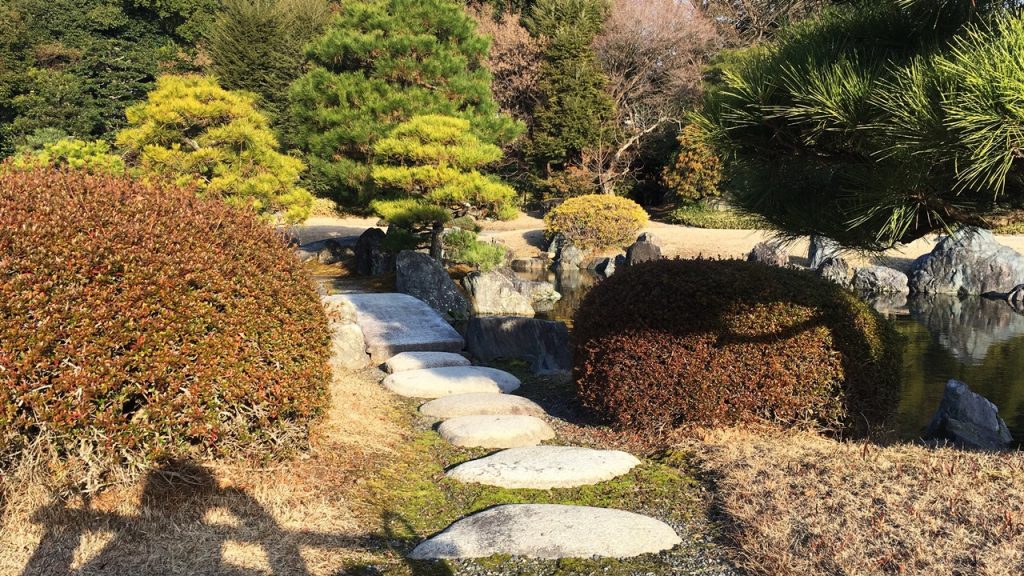
When Nijo Castle was built first, there was the castle tower in this place.
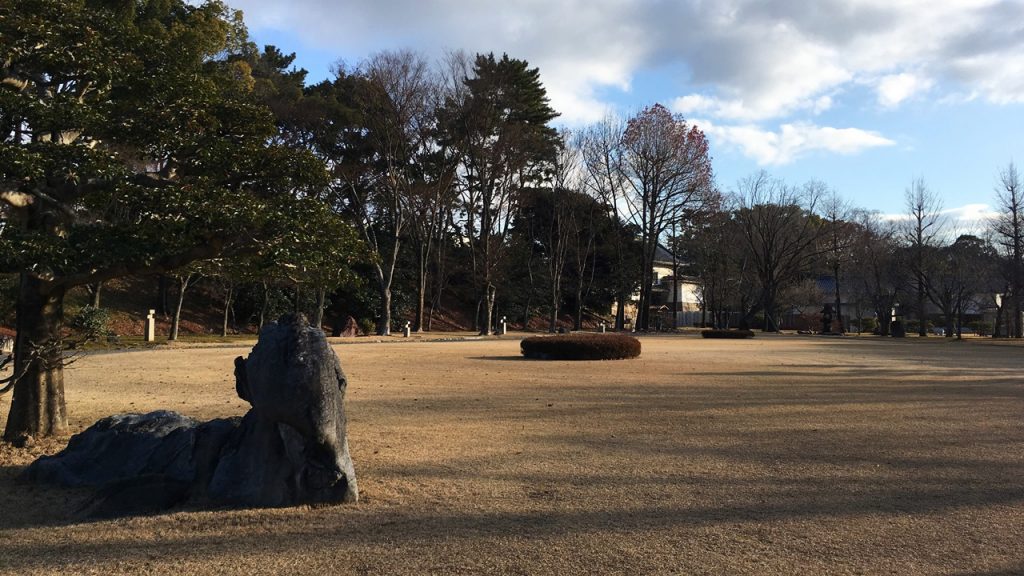
●香雲亭:Koun-tei
This is the tea-ceremony house named ‘Koun-tei(香雲亭).’
This building removed and rebuilt a residence of Ryoi SUMINOKURA(角倉了以) which was a business magnate of Kyoto and was built in 1965.
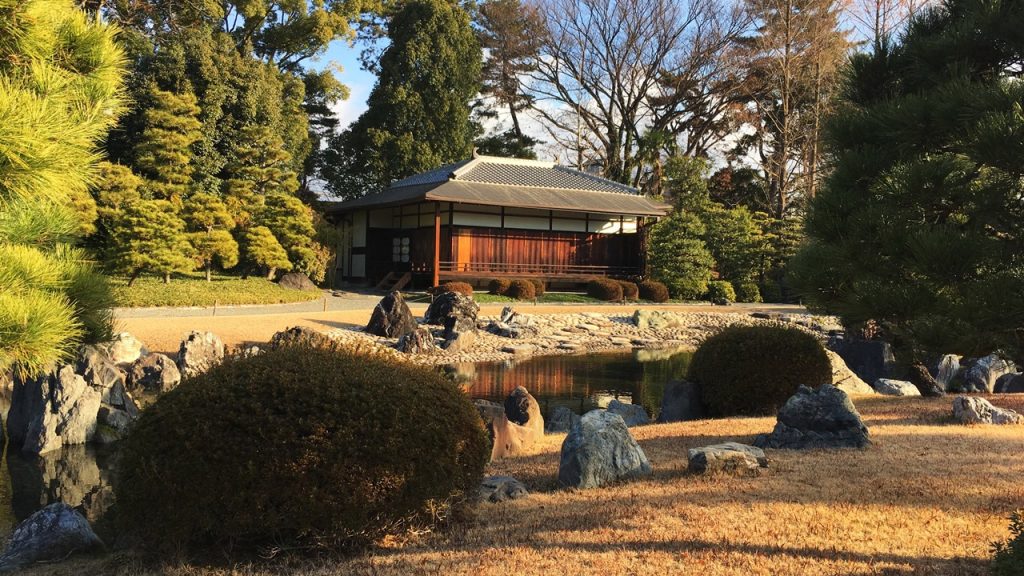
●和楽庵:Waraku-an
This is the tea-ceremony house named ‘Waraku-an(和楽庵).’
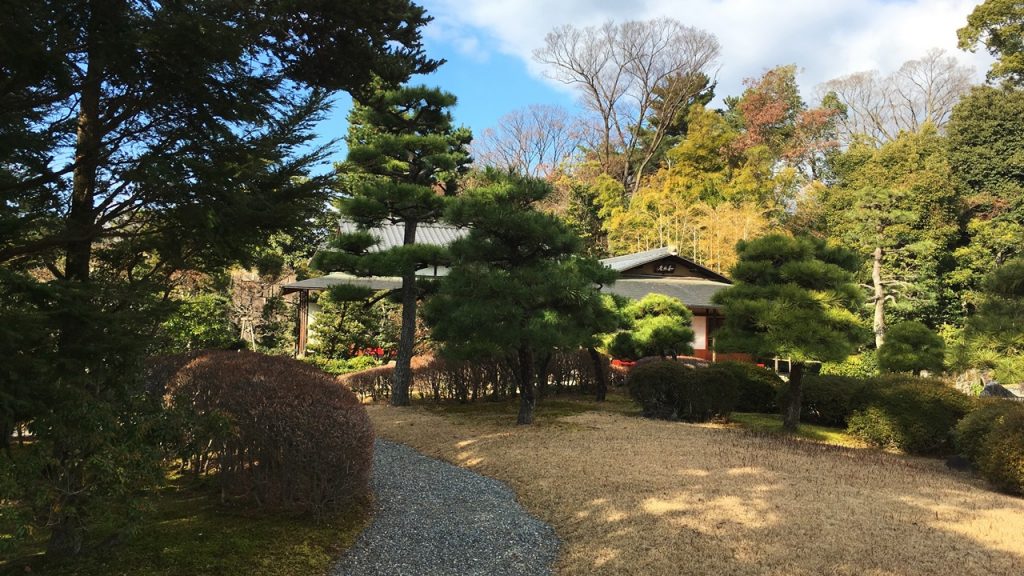
●加茂七石:Kamo Nanaishi(Kamo’s seven stones)
The stones called ‘Kamo Nanaishi(加茂七石:Kamo’s seven stones)‘ are put beside the Waraku-an.
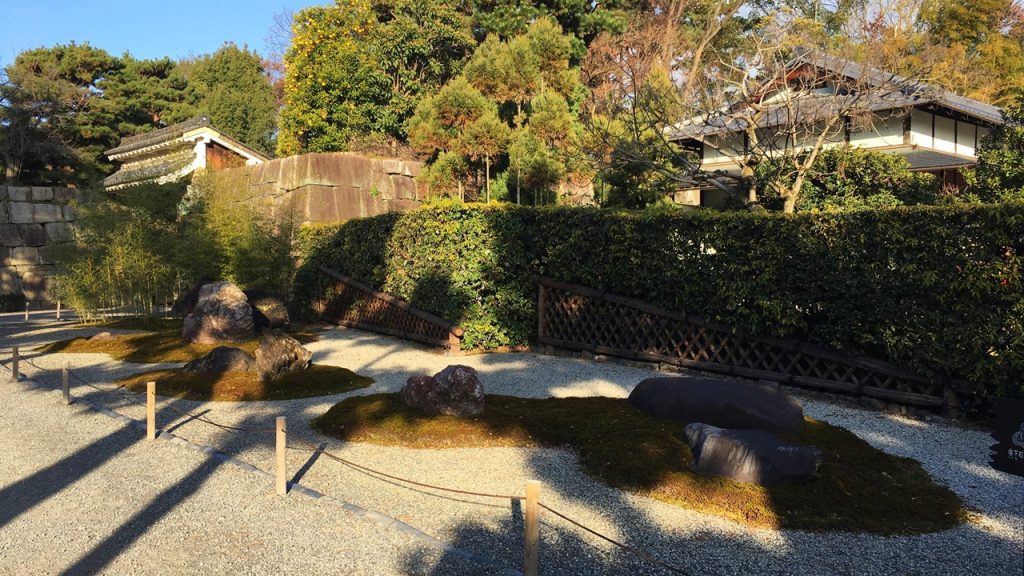
The Kamo Nanaishi is seven kinds of stones which is quarried around the Kamo River(鴨川/加茂川) of Kyoto.
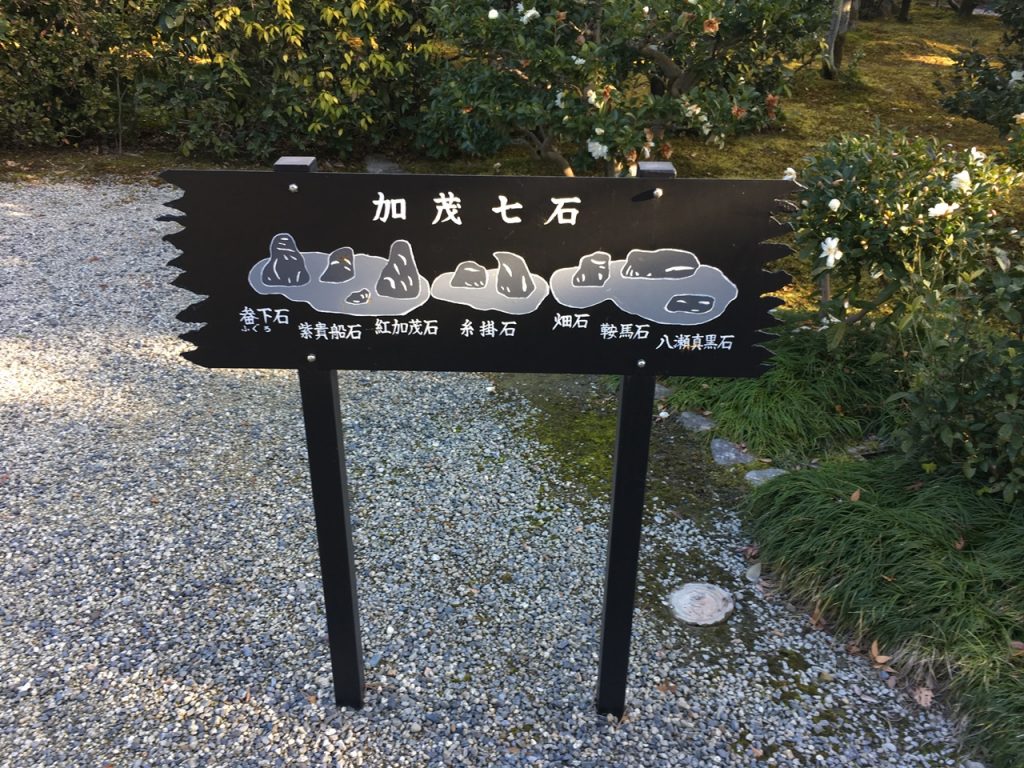
●展示・収蔵館:Museum
In this museum, we can see genuine wall paintings etc which had been displayed to the Ninomaru Palace.
(The wall paintings etc displayed in the Ninomaru Palace is a replica now.)

6.Photos of Nijo Castle (Nijo-jo)
■Flickr:Photo of Nijo Castle (Nijo-jo) (20170112)
7.Goshuin of Nijo Castle (Nijo-jo)
In Nijo Castle, we have gotten to be able to get a goshuin(御朱印) from July, 2016.
(But, because Nijo Castle is not a Buddhist temple and Shinto shrine, it is regarded as a commemoration stamp.)
The Sumigaki(the word which was written with a sumi(black ink)) is ‘元離宮二条城(Moto-rikyu Nijo-jo)‘ which is the formal name of this castle.
We can get this shuin in a souvenir shop. (300 yen)
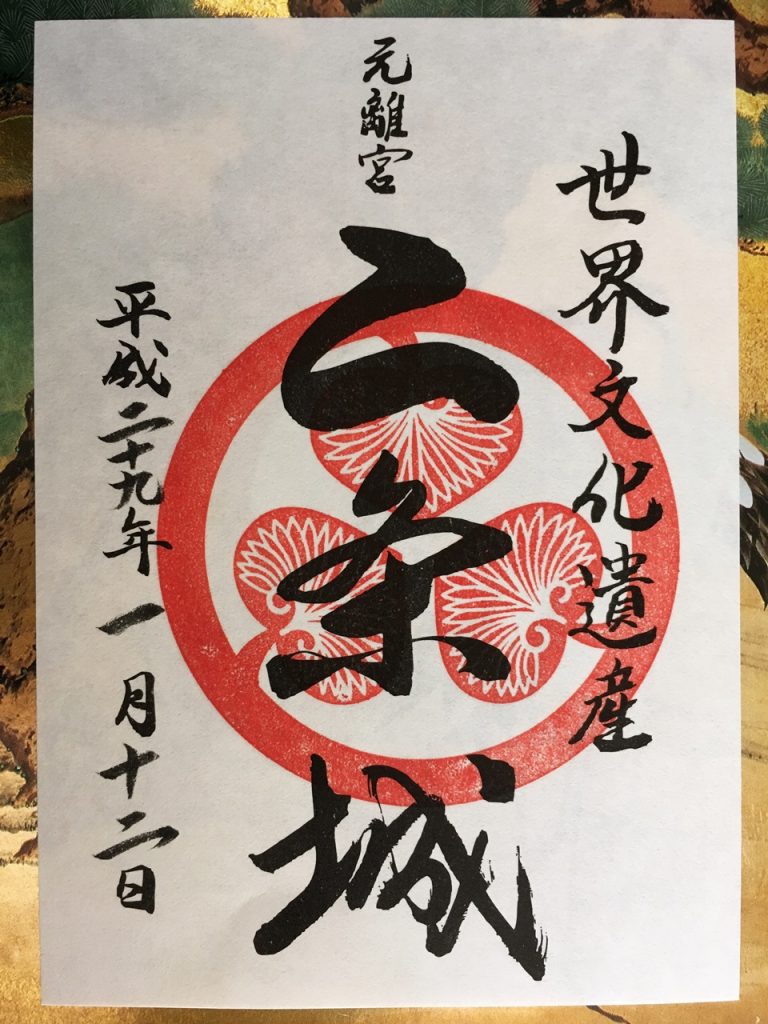
The luxurious goshuin book also is sold in a souvenir shop. (1,900 yen)
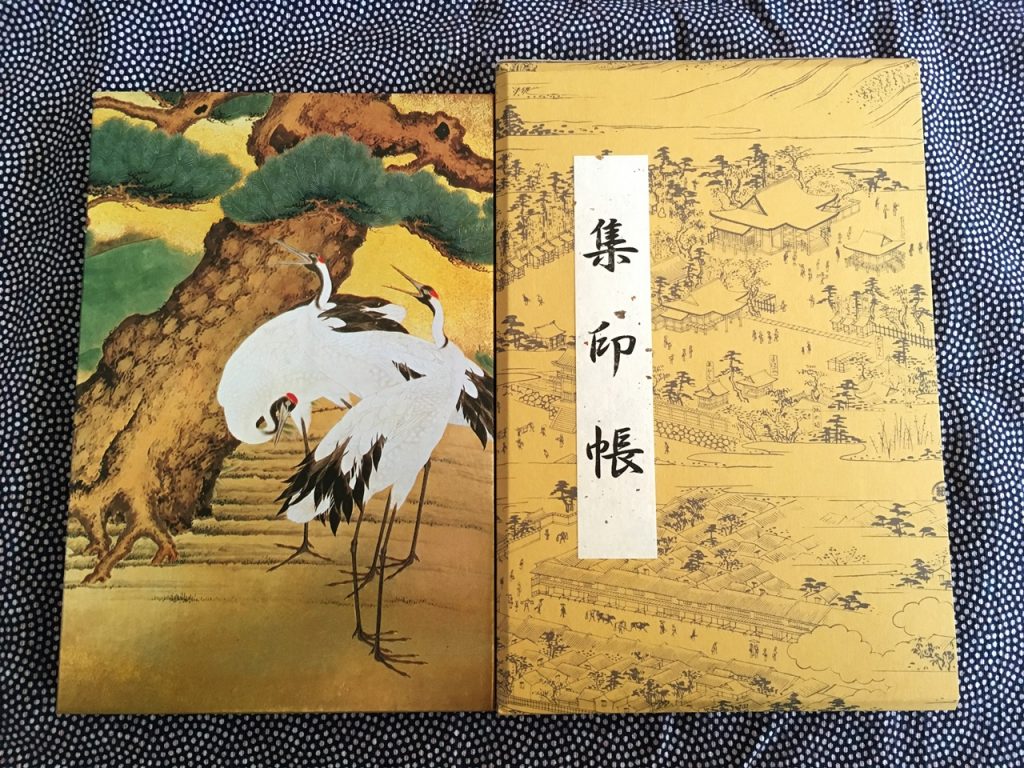
8.How to get to Nijo Castle (Nijo-jo)
The nearest station of Nijo Castle (Nijo-jo) is ‘Kyoto City Subway Nijojo-mae(Nijo-jo Castle) Station’.
(We can also go by bus from ‘JR Kyoto Station’, ‘Hankyu Kawaramachi Station’ and ‘Keihan Gion-Shijo Station’.)
■Route Example (From Osaka Station to Kyoto City Subway Nijojo-mae(Nijo-jo Castle) Station)
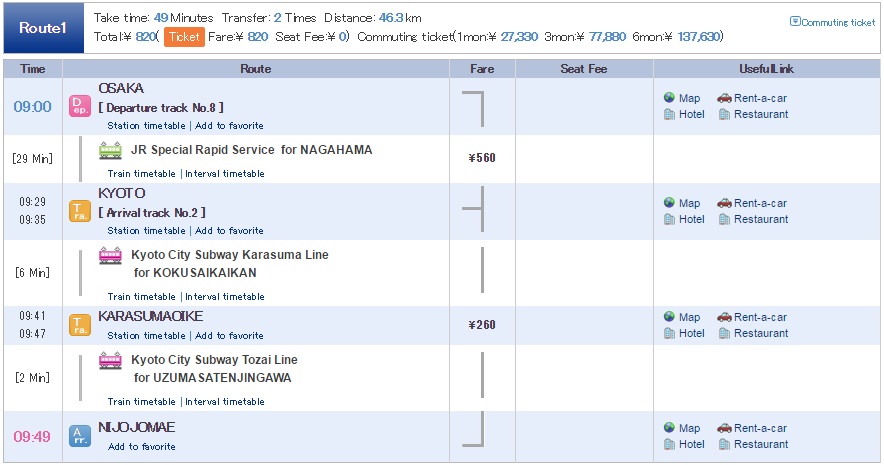
■Route Example (From Namba Station to Kyoto City Subway Nijojo-mae(Nijo-jo Castle) Station)
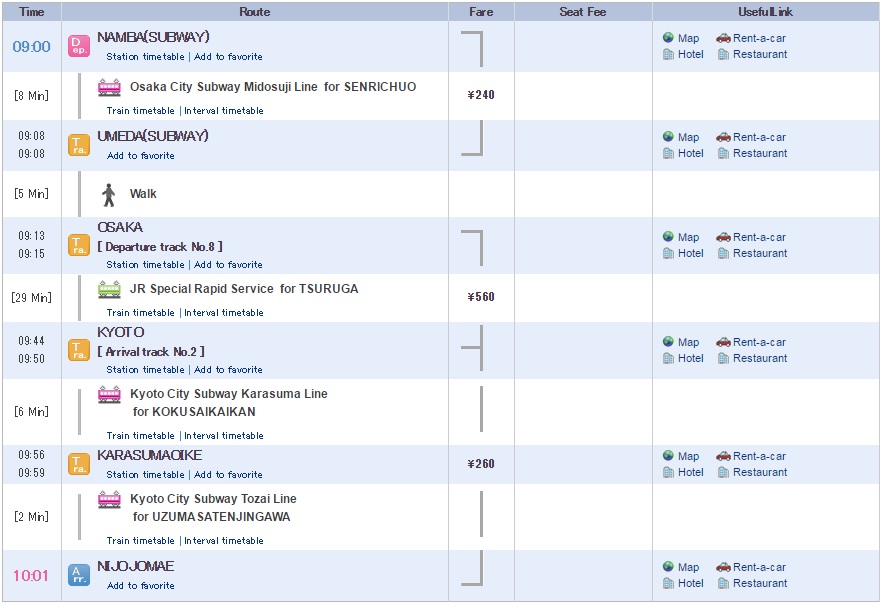
■Route Example (From Kyoto Station to Kyoto City Subway Nijojo-mae(Nijo-jo Castle) Station)
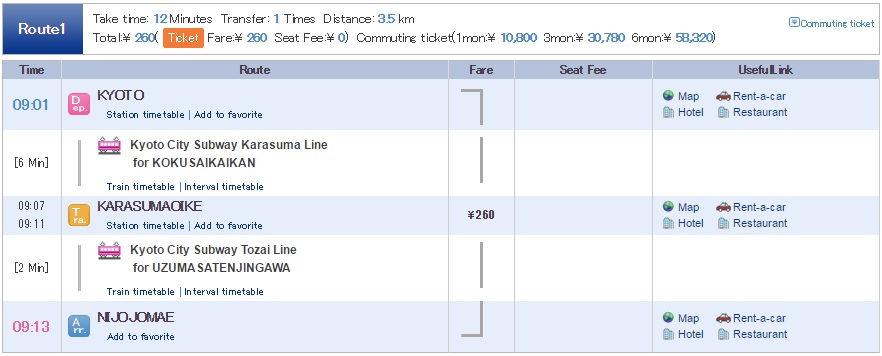
■When you go on foot from Kyoto City Subway Nijojo-mae(Nijo-jo Castle) Station
It’s about 3 minutes (100m) on foot. (It is in front of the station.)

■When you get on a bus from JR Kyoto Station
Timetable and Route Search of bus
■[Platform:B1]
[Timetable]Route No.9
Bus company:Kyoto City Bus
Routes/Destination:No.9[Bound for Nishigamo Via Nijo-jo Castle]
Boarding bus stop:Kyoto Sta.[B1]
Alighting bus stop:Nijojo-mae (Nijo-jo Castle)
Bus fare:230 yen
Time required:About 15 min
■[Platform:B2]
[Timetable]Route No.50
Bus company:Kyoto City Bus
Routes/Destination:No.50[Bound for Ritsumeikan Univ.]
Boarding bus stop:Kyoto Sta.[B2]
Alighting bus stop:Nijojo-mae (Nijo-jo Castle)
Bus fare:230 yen
Time required:About 15 min
[Timetable]Route No.101
Bus company:Kyoto City Bus
Routes/Destination:No.101[ound for Kinkakuji Temple Via Nijo-jo Castle]
Boarding bus stop:Kyoto Sta.[B2]
Alighting bus stop:Nijojo-mae (Nijo-jo Castle)
Bus fare:230 yen
Time required:About 19 min
■When you get on a bus from Hankyu Kawaramachi Station
Timetable and Route Search of bus
[Timetable]Route No.12
Bus company:Kyoto City Bus
Routes/Destination:No.12[Bound for Kinkakuji Temple]
Boarding bus stop:Shijo Kawaramachi[D]
Alighting bus stop:Nijojo-mae (Nijo-jo Castle)
Bus fare:230 yen
Time required:About 12 min
■When you get on a bus from Keihan Gion-Shijo Station
Timetable and Route Search of bus
[Timetable]Route No.12
Bus company:Kyoto City Bus
Routes/Destination:No.12[Bound for Kinkakuji Temple]
Boarding bus stop:Shijo Keihan-mae[B]
Alighting bus stop:Nijojo-mae (Nijo-jo Castle)
Bus fare:230 yen
Time required:About 13 min
■When you take a taxi
From Kyoto Station:1,410 yen ~ 1,760 yen (about 15 minutes)
From Gion-Shijo Station:1,250 yen ~ 1,440 yen (about 12 minutes)
Let’s show a taxi driver the following phrase.
9.Hotel search & reservation around Nijo Castle
How did you like it?
Please try to go.
Have a nice trip! XD
<Let’s search the sightseeing information of Kansai in Japan on ‘Japan’s Travel Manual‘!!>
<This site introduces the easiest way to get Japanese (Kansai) sightseeing spots to you.>

